Because the previous adage goes, you might be solely as robust as your weakest hyperlink, and grip power might be the limiting think about efficiency for a lot of totally different power athletes. Whether or not you’re a powerlifter, strongman, weightlifter, Crossfitter, or a leisure lifter who needs to be throughout robust, life is best with a powerful grip. On this article we’re going to discover the science and follow of grip power coaching and forearm muscle improvement. Whereas I will probably be referencing power athletes all through this text, the identical data might be utilized to enhancing grip power for athletes in a wide range of different sports activities reminiscent of mountaineering, impediment course racing, wrestling, Brazilian jiu-jitsu, and archery. For readers who’re extra involved with aesthetics over grip power, this text may also delve into the best way to enhance the dimensions of the forearm musculature and which muscular tissues are most impactful to complete forearm measurement.
Sorts of Grip
Broadly talking, I’ll classify gripping workouts into three totally different main classes with the popularity that there are different respectable methods to categorise them and that my definitions are usually not universally used. The commonest sort is help grip, which is used for all kinds of power coaching workouts reminiscent of deadlifts, rows, pullups, and farmer’s walks. Since most people who attempt to enhance grip power prioritize help grip, I will probably be discussing one of these grip most frequently all through this text.
Much less regularly utilized is the pinch grip, which because the title suggests, might be educated with plate pinches or pinch blocks. Assist grip and pinch grip workouts are each carried out with a static intent, however I think about the first distinction between them to be the path of resistance relative to the hand. If we consider our palm as a laser pointer, this imaginary laser will probably be directed nearer to parallel with the road of resistance throughout a pinch grip train, whereas will probably be directed nearer to perpendicular with the road of resistance throughout a help grip train. For example, throughout a combined grip deadlift, resistance is offered by gravitational drive appearing on the load in a downward path, whereas your palms are dealing with ahead and backward. If we think about a laser declaring of the palms, near a proper angle is fashioned between these lasers and the vector of gravitational drive. When holding a weight plate with a pinch grip, the palm is pointed principally downward near parallel with the vector from gravity appearing on the load plate. Given this distinction in orientation, considerably much less load can be utilized for pinch grip workouts that require you to generate a excessive quantity of friction drive with the intention to preserve finger contact with the implement.
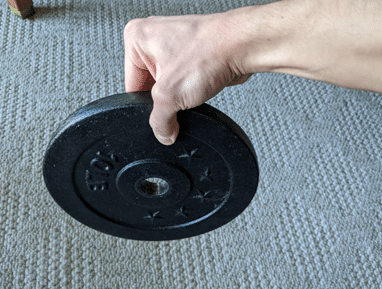
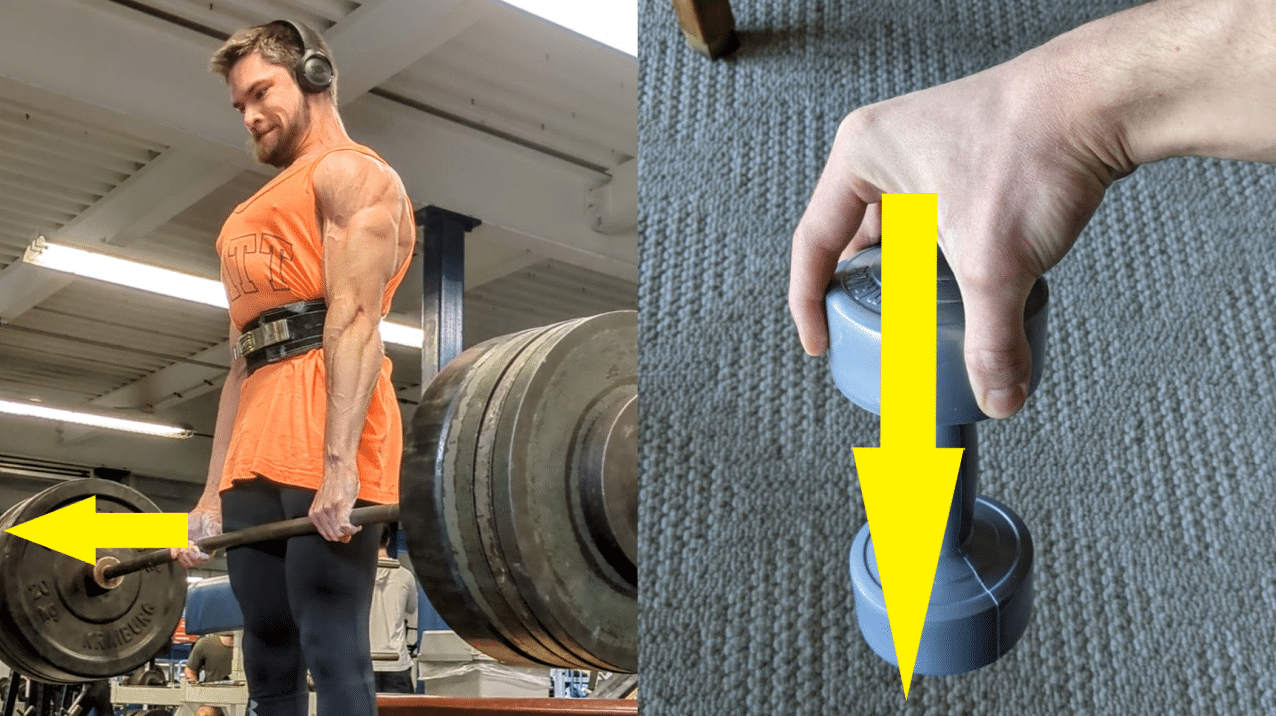
The third sort of grip is the crush grip, which is usually educated dynamically with hand gripper units however may also be educated statically by making an attempt to crush an object like a baseball. In distinction to help grip or pinch grip workouts that sometimes are loaded through gravitational forces, the resistance for a crush grip train is generated internally by the implement. For example, a torsion spring often offers the resistance when crushing a hand gripper. In accordance with Newton’s third regulation of movement, a drive that’s equal and reverse to your crushing drive can function the resistance when statically making an attempt to crush one thing like a baseball.
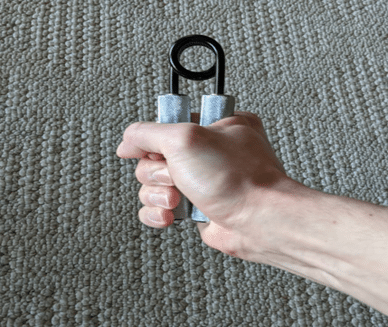
Whereas not concerned in most gripping actions, crushing grip is by far essentially the most generally examined sort of grip power in analysis as a result of accuracy, reliability, and ease of use of grip dynamometers (72,165). Along with being an consequence worth that can be utilized to trace rehab progress in a quantitative method after a wide range of higher extremity or neurological accidents, crush grip power measured with a grip dynamometer can also be a marker of total well being (24,26). Even when controlling for muscle mass, researchers have reported that grip power is inversely associated to all-cause mortality, and it may be a fair stronger predictor of cardiovascular mortality than systolic blood strain (i.e., the highest worth in a blood strain measurement) (67,109,110,127,144,146,164,171). Reasonably than purely being a causal relationship, I believe that the magnitude of this relationship is influenced by grip power being positively related to different variables conducive to well being reminiscent of full physique power and bone mineral density (115,159,177,209). Different power metrics reminiscent of bench press and leg press 1RMs are additionally considerably related to mortality danger, so grip power doesn’t essentially have a novel relationship to longevity relative to another sort of power (71,204). Particularly for aged girls, declining hip flexor power can also be extra strongly related to elevated mortality danger than declining grip power (213). Nonetheless, maximal grip power might be examined on a mass scale extra readily than different forms of train which will require a sure diploma of technical proficiency to carry out safely (e.g., again squat 1RM) or want costly specialised tools (e.g, isokinetic dynamometer). The hydraulic grip dynamometers which can be generally utilized in medical settings could price a whole bunch of {dollars}, however a wide range of totally different digital dynamometers might be bought for about $30 and yield measurements which can be fairly just like the gold normal (i.e., lower than 10% of a distinction) (134). Along with utilizing dynamometers to trace whether or not a block of grip power coaching has been productive, some lifters will use these units as a part of a neuromuscular readiness evaluation in an identical option to coronary heart charge variability or vertical bounce peak (76,206). To my information, the potential for an acute grip power measurement to operate as an indicator of systemic fatigue has but to be studied in lifters.
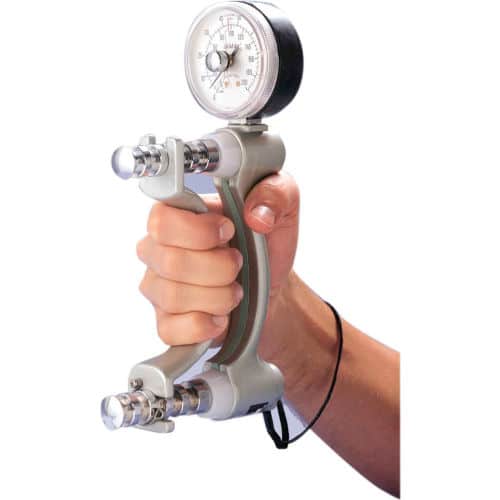

A foundational precept of train science is that the variations that happen after a choose sort of coaching are particular to the actual calls for imposed by that sort of coaching. Consequently, if you wish to enhance your power with a selected sort of grip, you ought to be coaching that particular sort of grip. Nonetheless, this doesn’t imply that maximizing specificity is the important thing to maximizing outcomes. There’s a motive why coaching for profitable powerlifters shouldn’t be solely composed of maxing out of their competitors fashion squat, bench press, and deadlift.
For some people, grip power is not going to be a limiting think about efficiency of competitors actions in the event that they persistently carry out their sport particular coaching, however this isn’t at all times the case. The amount of coaching that’s required to deal with a relative grip power weak point could exceed somebody’s restoration capability if the competitors motion is solely used for grip coaching. For example, if a powerlifter’s deadlift is restricted by his grip power and he already recurrently trains deadlifts with out straps, merely performing extra deadlifts with out straps might not be sustainable. Some individuals can use this method with success, however others will discover that their low backs and hand pores and skin can’t recuperate from additional deadlift quantity. To enhance deadlift particular grip power, using a double overhand grip on heat up units and performing a static maintain over the past rep of a piece set are two generally used approaches. Alongside performing rows, vertical pulls, farmer’s walks, suitcase carries, and rack pull holds with out straps, these are easy, time-tested strategies for enhancing deadlift grip power. Nonetheless, you need to use a wide range of different coaching strategies to extend long-term grip power and forearm muscle mass in a fashion that’s much less fatiguing than merely performing extra deadlift particular coaching. To reap the best efficiency switch to a selected sort of grip, remember the fact that these decrease specificity types of coaching needs to be used to complement your sport particular grip coaching fairly than substitute it.
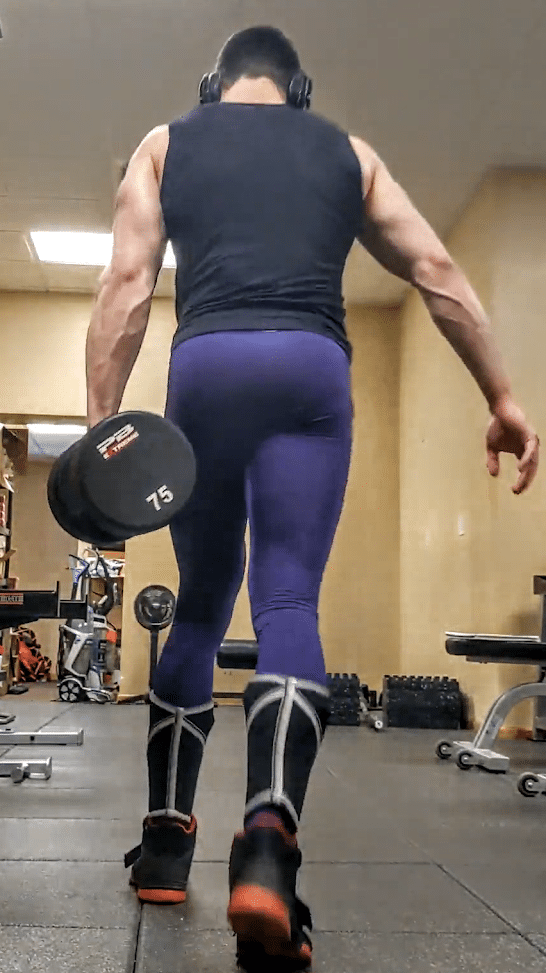

Grip Anatomy and Physiology
The human hand has 27 bones which can be categorized into three teams. Most distally (i.e., furthest away from the arm) lie the 14 phalanges that represent the skeletal construction of the fingers. Collectively, adjoining phalanges type interphalangeal joints that permit flexion (i.e., bending) and extension (i.e., straightening). Aside from the thumb, which accommodates two phalanges and a single interphalangeal joint, every finger has three distinct phalanges and two interphalangeal joints. The one closest to the fingertip is called the distal interphalangeal joint, whereas the one nearer to the knuckle is called the proximal interphalangeal joint. The central portion of the skeletal hand consists of 5 bones often known as the metacarpals, which every work together with a phalange to type a metacarpophalangeal joint that enables flexion, extension, abduction (i.e., spreading aside), and adduction (i.e., coming collectively).
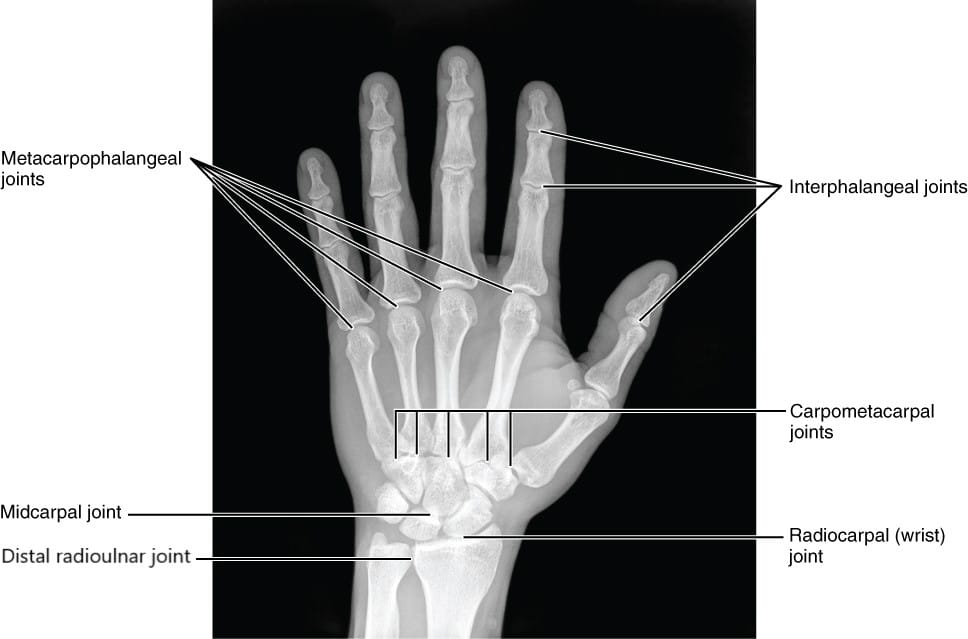
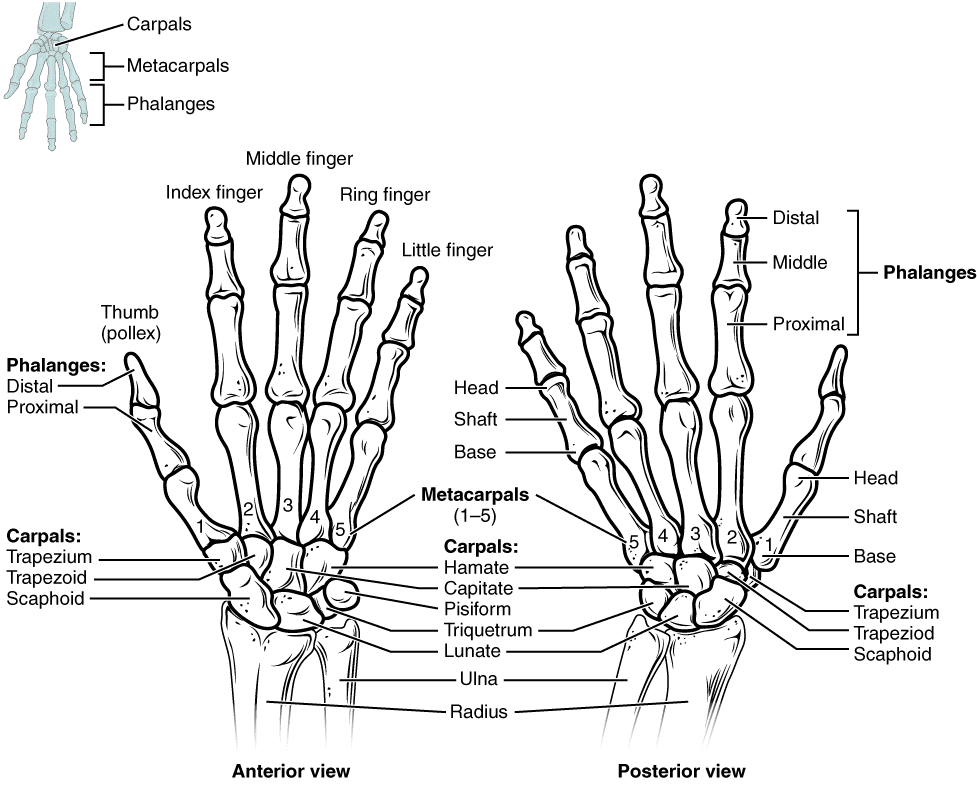


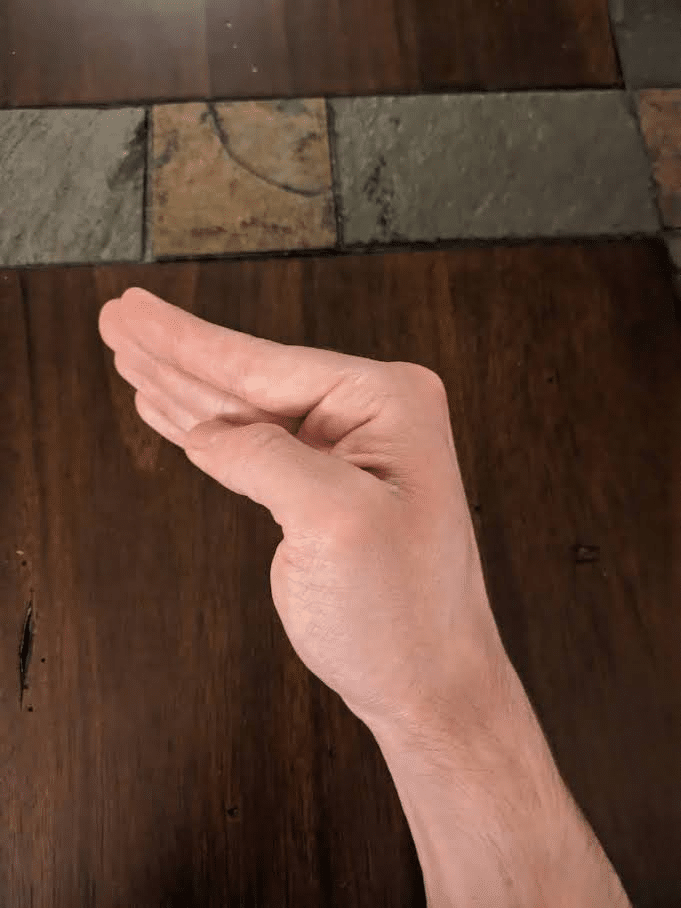
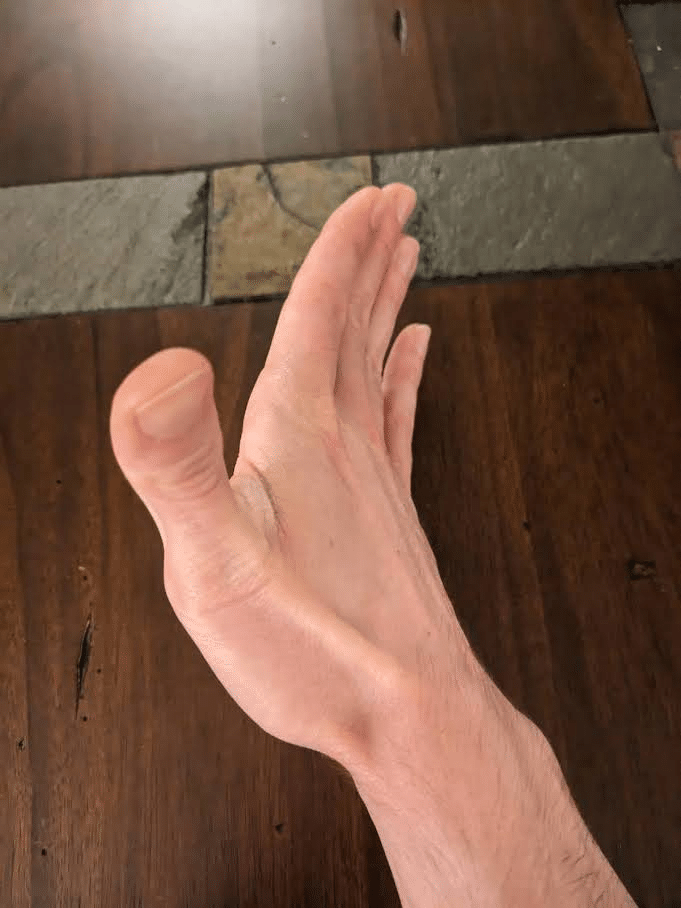
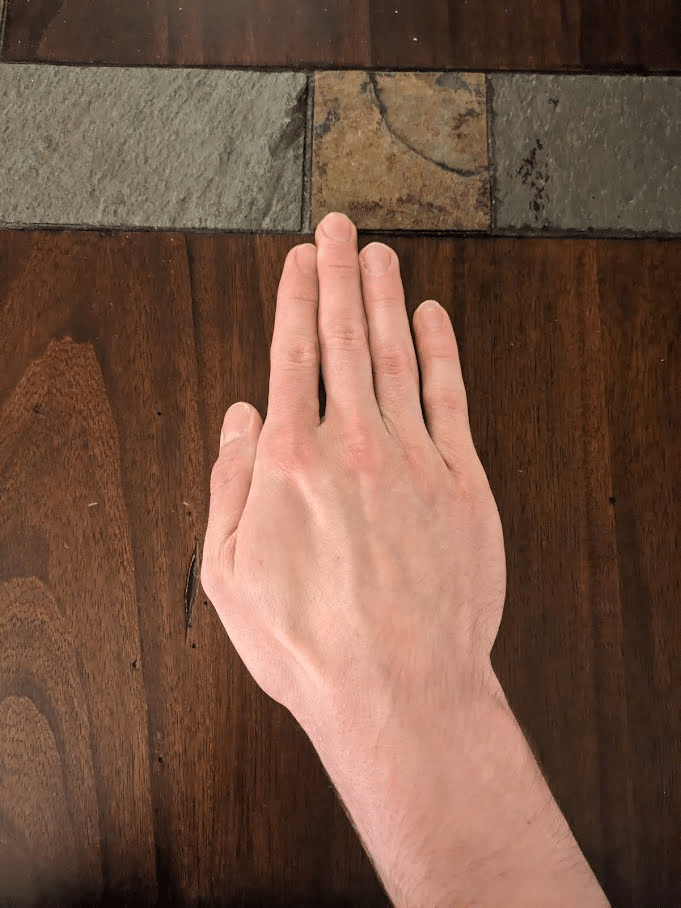
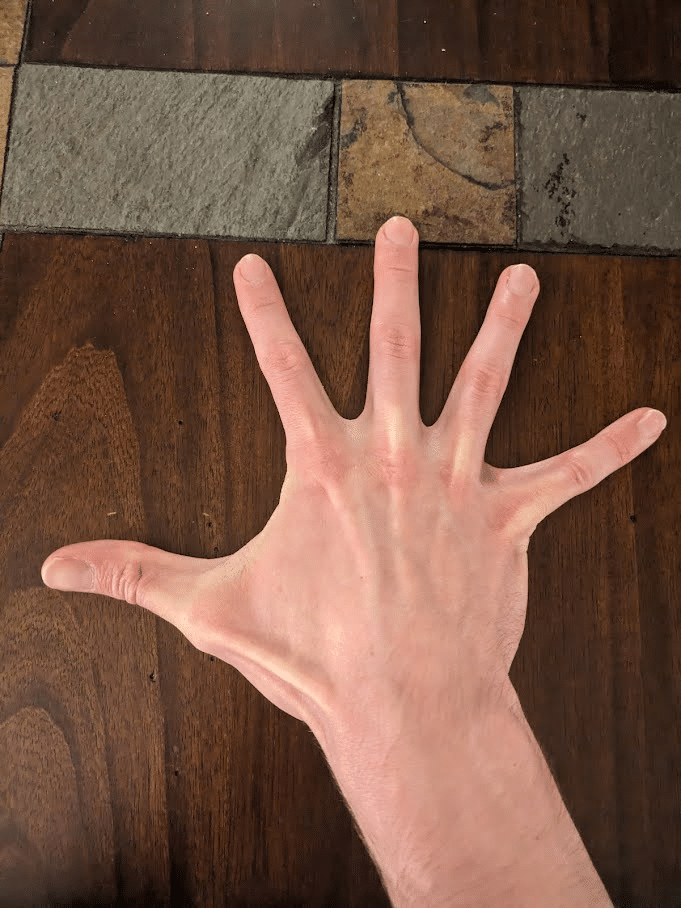
Relying on the place they originate, muscular tissues that act on the hand’s joints are categorized as intrinsic or extrinsic hand muscular tissues. The muscle bellies of the smaller intrinsic hand muscular tissues are located throughout the hand, whereas these of the extrinsic muscular tissues are located throughout the forearm and have tendons that cross the wrist as they course towards the phalanges. Our palms often comprise 19 intrinsic muscular tissues (some individuals have fewer) that permit us to carry out exceptional feats of dexterity solely achievable by Homo sapiens (130). Fairly related to grip power, nearly all of these intrinsic muscular tissues contribute to flexing the metacarpophalangeal joints (11,62,98,211).
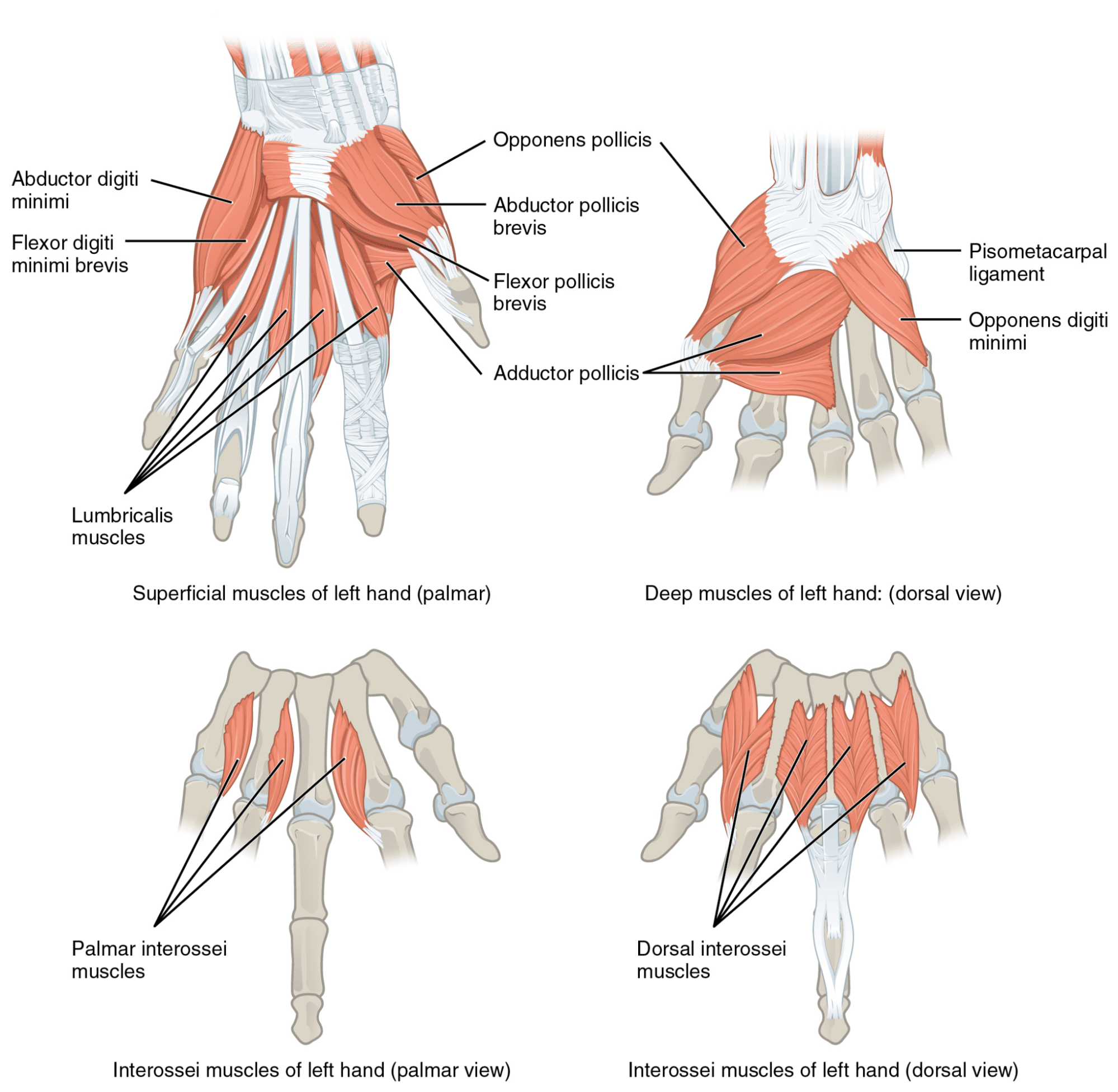
Nonetheless, a lot bigger extrinsic muscular tissues additionally cross these joints and are in a position to generate meaningfully extra flexion torque on the metacarpophalangeal joints as a result of shut relationship between muscle measurement and drive manufacturing (31). Whereas I’ve but to see the identical evaluation utilized to the thumb, the proportion of complete metacarpophalangeal flexion torque that may be produced by the intrinsic muscular tissues varies among the many fingers, starting from 8-28% for the index by little fingers (33,98). For these 4 fingers, the rest of metacarpophalangeal flexion torque will probably be produced by two extrinsic muscular tissues which can be indispensable to grip power efficiency, particularly the flexor digitorum profundus and flexor digitorum superficialis (33,98). Together with the flexor pollicis longus, which flexes the thumb’s joints, these are the one muscular tissues within the physique which have the flexibility to flex the interphalangeal joints. These three extrinsic muscular tissues, situated throughout the anterior (i.e., entrance) compartment of the forearm, operate as wrist flexors together with three different muscular tissues throughout the similar forearm compartment. As a result of extrinsic muscular tissues crossing the wrist and finger joints, wrist place and wrist workouts can meaningfully have an effect on grip power.

Proximally (nearer to the forearm) to the metacarpals lie eight carpal bones that work together with metacarpals to type carpometacarpal joints and one another to type intercarpal joints. In live performance with different finger and wrist actions, these hand joints allow variable vary of movement, however their particulars are usually not notably related to our coaching (55,131). The three carpal bones that lie closest to the forearm work together with the radius to type the wrist joint (radiocarpal joint), which permits flexion, extension, radial deviation (abduction), and ulnar deviation (adduction). Forearm pronation and supination, which individuals could typically attribute to the wrist joint, happens because the radius interacts with the ulna on the two radioulnar joints, one in every of which is true subsequent to the wrist joint whereas the opposite lies close to the elbow joint.




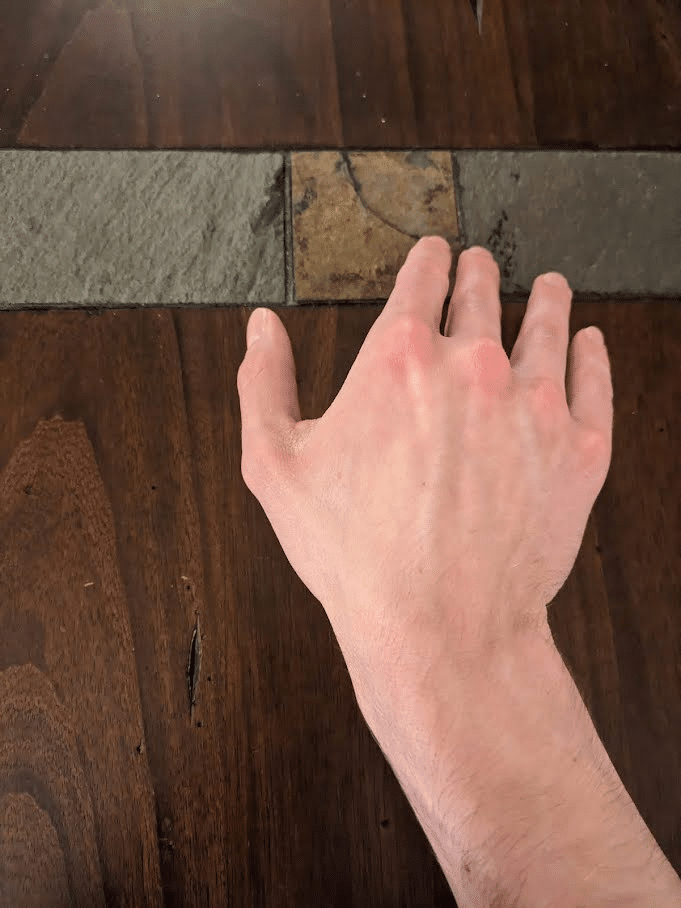
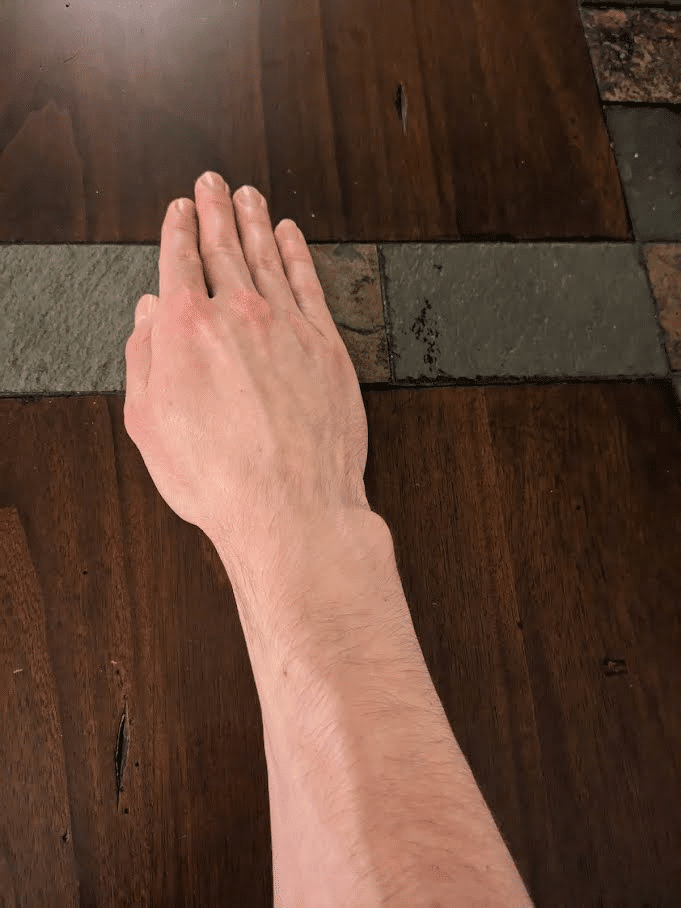

Determinants of Grip Energy
When examined with a dynamometer, grip power displays an “inverted U curve” relationship with the dimensions of the implement being gripped. An optimum span is current to maximise grip drive, and growing or reducing the span from that optimum measurement reduces how a lot drive might be generated (23,54,108,156,168). The common optimum span for producing grip drive will increase as hand measurement will increase, however most research discover spans near 55mm (2.2”) to allow the best grip drive for the everyday particular person (54,64,108,168).

When measuring the person contributions from the index by little fingers throughout maximal crush gripping, the center finger is often the strongest, adopted by the index finger, ring finger, after which the little finger, which is meaningfully weaker than the remaining (8,53,107,112,133,161,196). In distinction to the a number of research I discovered that assessed the contributions of the index by little fingers, I used to be solely in a position to determine a single research that additionally assessed the contribution of the thumb when maximally gripping with all 5 fingers (38). Cha et al (2014) attributed 17% of complete grip power to contributions from the thumb, which was lower than the contributions from the center (31%) and index (22%) fingers. Cha et al reported the contributions of the ring and index fingers collectively (29%), however they acknowledged their findings to nonetheless point out that the little finger contributed the least, which is congruent with the opposite research on this subject.
Whereas some pinch grip lifts are an exception that contain prolonged interphalangeal joints, most forms of grip workouts are carried out with the interphalangeal joints and metacarpophalangeal joints concurrently flexed across the implement. Grip failure often happens as a lifter is unable to keep up a enough diploma of flexion on the interphalangeal joints because the resistive drive causes them to progressively lengthen. When gripping an object comparable in diameter to a barbell, a lifter could possibly full a rep if the metacarpophalangeal joints lengthen and the article drifts towards the fingertips as long as the interphalangeal joints proceed to stay flexed.
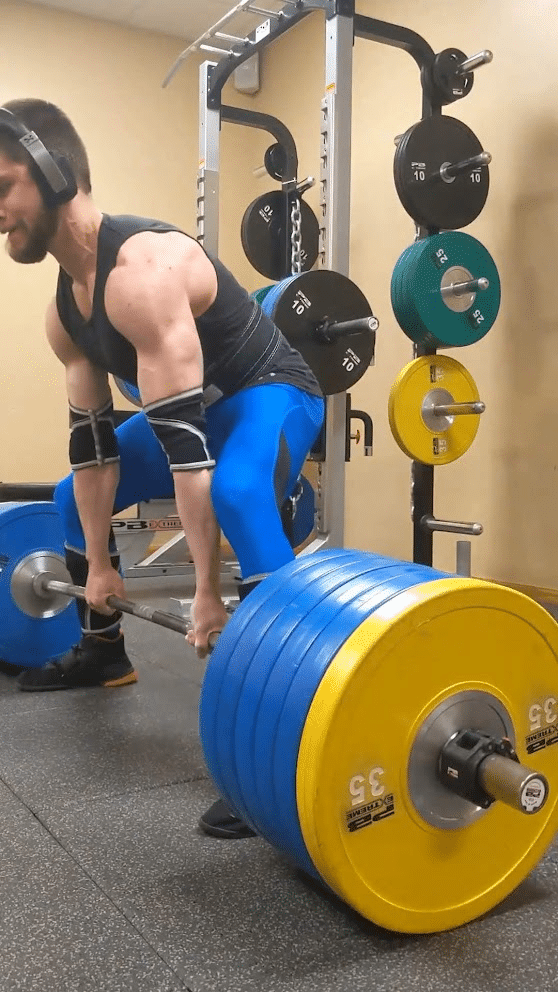

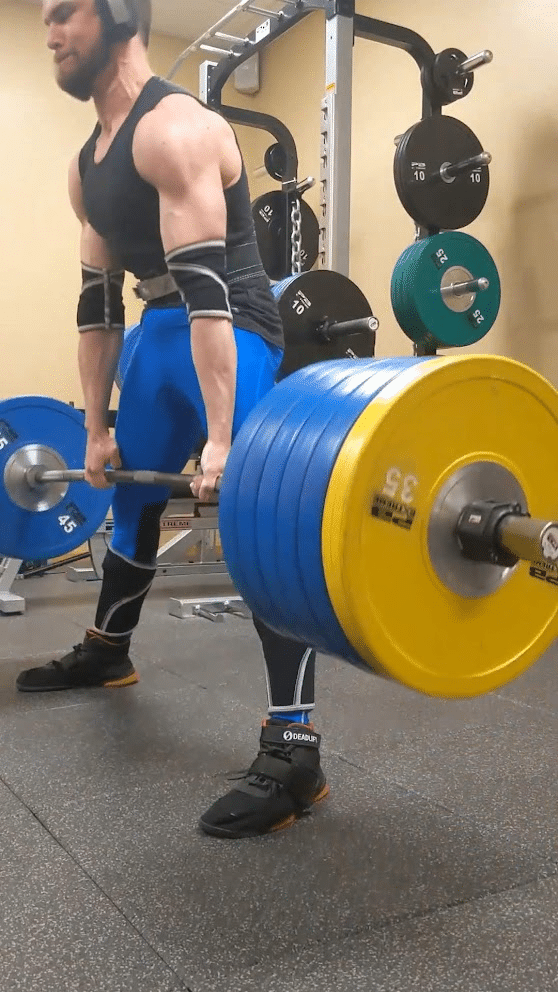

Whereas deadlifting, some lifters will deliberately provoke the pull with this extra prolonged metacarpophalangeal joint place, which some individuals consult with as a “fingertip grip” place. In distinction, lifters will sometimes grip a barbell with these joints extra tightly flexed because the bar rests nearer towards the palm. In comparison with utilizing a deeper grip, when starting a deadlift rep with a “fingertip grip,” the lifter can use a barely extra upright beginning place that could be advantageous for somebody who has lengthy fingers particularly if using a sumo stance. Past serving to a lifter preserve sufficient contact with the bar to make use of a “fingertip grip” efficiently, having lengthy fingers (notably lengthy proximal phalanges) will permit a lifter to begin from a extra upright place relative to having shorter fingers. Virtually this extra upright place could make the beginning of a “fingertip grip” deadlift akin to a really low block pull. Variations amongst people definitely exist, however breaking the ground tends to be essentially the most difficult level in a sumo deadlift extra usually than a traditional deadlift. Consequently, the “fingertip grip” is extra prone to benefit a sumo puller in the identical method {that a} barbell with better whip (i.e., deadlift bar) will.


No matter which grip is used, practically each sort of gripping exercise will depend on somebody’s means to supply flexion torque on the interphalangeal joints and/or metacarpophalangeal joints. Correspondingly, the flexor digitorum superficialis, flexor digitorum profundus, and flexor pollicis longus are the three key grip muscular tissues since they’re the one muscular tissues that may flex the interphalangeal joints and metacarpophalangeal joints concurrently.
Understanding Forearm Muscle Names
Just like the hand and foot muscular tissues, the names of the forearm muscular tissues are a mouthful to say, however understanding why they’re named this manner could make it quite a bit simpler to recollect and perceive them whereas not complicated them with different muscular tissues. The “flexor” half at the beginning of every title communicates that they operate to flex the joints they cross. Any muscle with “pollicis” in its title implies that it acts on the thumb, whereas muscular tissues with “digitorum” act on the opposite 4 digits. If a muscle has “longus” in its title, it’s longer than a muscle performing an identical operate that can have “brevis” in its title. For example, the hand has a flexor pollicis brevis that additionally flexes the thumb’s carpometacarpal and metacarpophalangeal joint, but it surely doesn’t act on the wrist or interphalangeal joint as a result of it’s shorter than the flexor pollicis longus. “Profundus” is a Latin time period for “deep,” so the flexor digitorum profundus lies deeper within the forearm relative to the flexor digitorum superficialis, which lies nearer to the floor (i.e., superficially).
Word on Muscle Dimension Comparisons
All through this text, I examine the dimensions of various muscular tissues, and it’s value noting that the majority of those measurements are derived from analysis on cadavers. Naturally, older people usually tend to donate their our bodies to the development of science than youthful people because the present common world life expectancy is barely greater than 70 years previous (which is remarkably better than the 46 12 months previous world life expectancy in 1950) (74). Within the basic inhabitants, common complete muscle mass declines with getting older past the fifth decade in life (82,111). Nonetheless, simply as quick twitch muscle fibers are extra conscious of hypertrophy following resistance coaching, so too are quick twitch fibers extra inclined to atrophy with getting older (111,141,187,203). Consequently, the dimensions of a sluggish twitch dominant muscle (e.g., soleus) relative to the dimensions of a muscle with a better proportion of quick twitch fibers (e.g., gastrocnemius) could also be better in cadavers than non-elderly grownup lifters (52,215). The overall lifting neighborhood additionally trains sure muscle teams far more robustly than others, so common muscle proportions can meaningfully differ between lifters and non-lifters of comparable ages. For example, leisure lifters have exhibited shoulder inside rotation to exterior rotation power ratios which can be considerably better than the final inhabitants (1,99). Whereas neurological variations can contribute to this power ratio discrepancy, the lifters additionally almost certainly have proportionally better mass of the shoulder inside rotator muscular tissues relative to the exterior rotators, given the shut relationship between muscle measurement and power (4). The infraspinatus and teres minor (that are the 2 main shoulder exterior rotators) have been measured to have a mixed quantity that’s about half that of the pec main (a main shoulder inside rotator) within the basic inhabitants (77,103). Nonetheless, lifters usually prioritize coaching their chests to a better diploma than their rotator cuffs, so their pec majors are seemingly proportionally bigger on common. The general takeaway from this digression is that the forearm muscle measurement proportions we cowl all through this text could considerably differ from these within the lifting neighborhood. Within the absence of information on muscle proportions of educated people, we nonetheless are nonetheless utilizing essentially the most pertinent obtainable proof. Whereas the exact measurement comparisons will fluctuate amongst totally different populations, this variance is not going to detract from the utility of the sensible functions based mostly on this physique of proof.
The Forearm’s Finger Flexor Muscle tissues
Lifters generally carry out wrist curl variations in an effort to enhance grip power, and carryover can certainly be achieved, however not from growing wrist flexion power straight. The flexor digitorum superficialis, flexor digitorum profundus, and flexor pollicis longus all have significant wrist flexion second arms, which suggests they’ve favorable leverage for producing wrist flexion torque (69,162). Consequently, they are often educated with wrist curls alongside three different muscular tissues within the forearm’s anterior compartment (i.e., flexor carpi radialis, flexor carpi ulnaris, and palmaris longus) (69,162). Whereas all of those forearm muscular tissues have pretty comparable wrist flexion second arms, the flexor digitorum superficialis and flexor digitorum profundus are in a position to produce nearly all of complete wrist flexion torque as a result of their measurement (69,77,162).

Relative to the flexor pollicis longus, these two muscular tissues generate significantly extra drive on the wrist and finger joints as a result of their mixed cross sectional is about 4 to seven occasions better (relying on the supply) (9,69,77). Because of this, a given proportion enhance within the power of those two muscular tissues can have a a lot better absolute impact on grip power in comparison with if the flexor pollicis longus was strengthened by the identical proportion. Primarily as a result of this discrepancy in drive manufacturing capability, I think about strengthening the flexor digitorum superficialis and flexor digitorum profundus to be much more vital to enhancing grip efficiency than strengthening the flexor pollicis longus. Moreover, you should still proceed holding onto a bar throughout a help grip train even when your thumb slips off as long as your index by little fingers stay in touch with the implement. With this stated, the flexor digitorum superficialis, flexor digitorum profundus, and flexor pollicis longus can all be strengthened concurrently throughout a wide range of workouts, however I don’t deem all three of them to be equally impactful. Coaching these three muscular tissues by a wrist flexion train could switch to improved grip power in the identical manner that coaching the hamstrings with a knee flexion train can switch to improved hip extension power (28). Hip hinges and leg curls are usually not comparable motion patterns, however coaching one in every of them can enhance your power within the different largely as a result of hamstring hypertrophy.
As I beforehand mentioned on Stronger By Science, I don’t count on that solely coaching a muscle with isometric workouts that by no means load the muscle at lengthy lengths is an optimum methodology of inducing muscle hypertrophy. I’ve little doubt that performing numerous pulling workouts and weighted carries can present a stimulus to the finger flexor muscular tissues to develop as much as a sure level on condition that isometric coaching definitely can induce hypertrophy (114). Nonetheless, I’m extremely skeptical that this fashion of coaching by itself may maximize hypertrophy for these muscular tissues in the identical manner that I doubt that hip flexion workouts (e.g., hanging leg raises) carried out with out dynamic trunk flexion are an optimum technique of rising the rectus abdominis. Muscle measurement doesn’t essentially equate to power, and a lifter can expertise important power positive aspects as a result of neural variations (154). Nonetheless, within the long-term, the power potential of a muscle group can’t be absolutely reached with out accruing extra contractile tissue. It ought to come as no shock that maximal grip power is strongly positively correlated with forearm muscle measurement (2,3,83,197). With this in thoughts, I strongly advocate performing workouts which can be properly suited to extend the dimensions of the finger flexor muscular tissues should you prioritize growing grip power.

To my information, no research has but to analyze whether or not coaching the finger flexor muscular tissues at lengthy peak muscle lengths can induce better progress than coaching them at reasonable to quick muscle lengths. This absence of analysis applies to most muscle teams within the human physique. Nonetheless, the obtainable physique of proof largely helps that coaching a muscle in a lengthened place could be a notably efficient methodology of inducing hypertrophy for a wide range of muscle teams (93,94,117,125,210). Except new proof emerges indicating that the finger flexor muscular tissues are an exception to this development, I’d program workouts that practice them at lengthy lengths when striving to extend their measurement. Like three of the 4 hamstring heads, the finger flexor muscular tissues cross multiple joint, so we have to account for the positions of a number of joints when figuring out the lengths at which they’re loaded throughout an train. The finger flexor muscular tissues work at fairly quick lengths when the wrist and finger joints are concurrently flexed in the identical manner that the biarticular (i.e., crossing two joints) hamstrings are absolutely shortened able of knee flexion and hip extension. On this shortened place, the muscular tissues can function in a state of lively insufficiency the place drive manufacturing is submaximal. When the wrist and finger joints are in prolonged positions, the finger flexor muscular tissues are elongated past their resting lengths in the identical manner that the biarticular hamstrings might be absolutely stretched when the hip is flexed whereas the knees are prolonged.
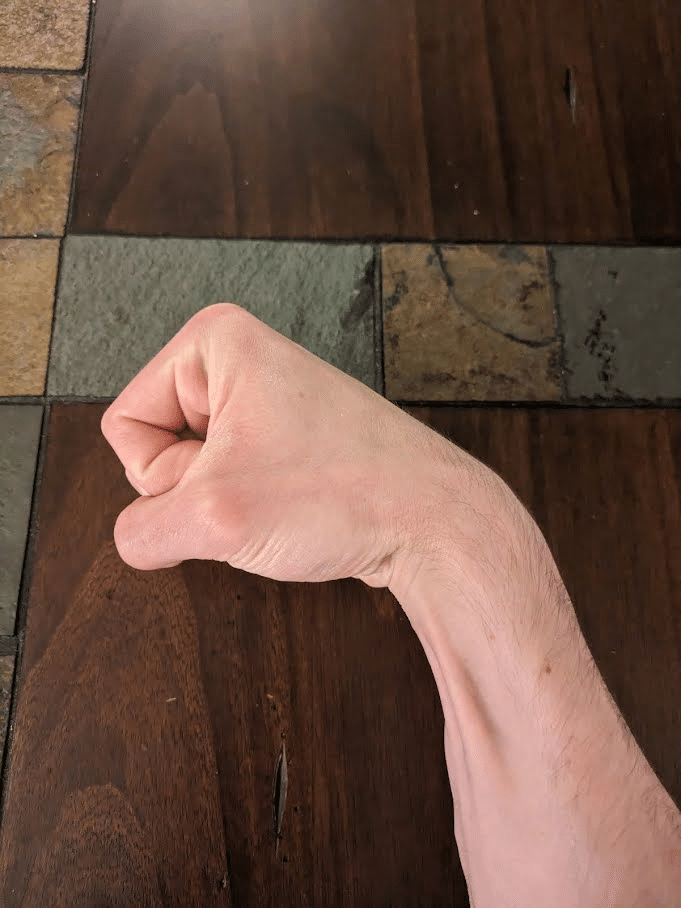

Wrist Curls and Hand Grippers
Throughout many help grip workouts reminiscent of deadlifts and farmer’s walks, the finger flexor muscular tissues will probably be frequently educated at reasonably quick lengths given the flexed finger joints and impartial wrist place. With a regular wrist curl variation utilizing a software reminiscent of a barbell or dumbbell, these muscular tissues will nonetheless be shortened on the finger joints, however they are often lengthened on the wrist because it extends throughout the eccentric section of the motion. When accounting for the wrist and finger positions, the finger flexor muscular tissues might be educated at longer peak lengths than most help grip workouts, however they nonetheless is not going to be loaded past reasonable lengths as a result of flexed finger place.
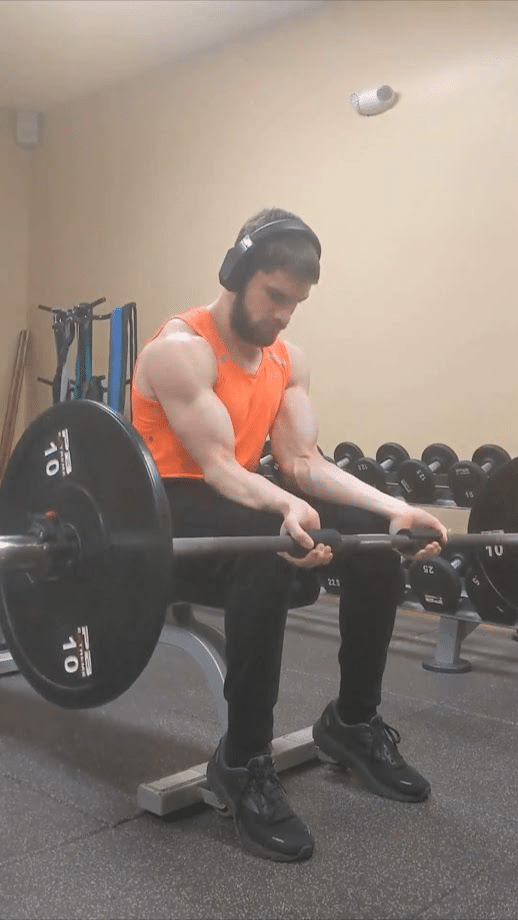
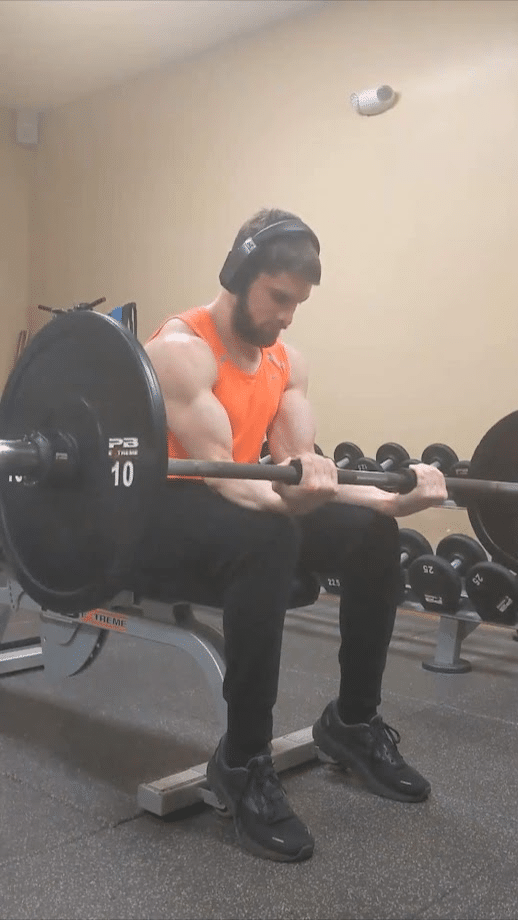
Alternatively, you’ll be able to carry out a wrist curl variation the place your fingers dynamically lengthen (on the metacarpophalangeal joints) throughout the eccentric section because the implement rolls towards your fingertips and also you lengthen your wrist, permitting you to coach the finger flexor muscular tissues at longer lengths. To take care of management of the load, you’d then flex your fingers across the implement throughout the concentric section as you flex your wrist. Doing so will assist you to practice the wrist flexion and metacarpophalangeal joint flexion capabilities of the flexor digitorum superficialis and flexor digitorum profundus concurrently in a dynamic method. The addition of metacarpophalangeal joint flexion may also assist you to practice the intrinsic hand muscular tissues that help the bigger forearm muscular tissues in performing this operate throughout gripping actions. With this modified wrist curl approach, you might want to ensure that the barbell/dumbbell doesn’t roll too far towards your fingertips to the extent that the load slides out of your palms. In comparison with the usual wrist curl approach, you’ll require much less load with this variation to attain the identical issue as a result of the lever arm of the resistance appearing on the wrist joint will increase because the implement rolls towards your fingertips.
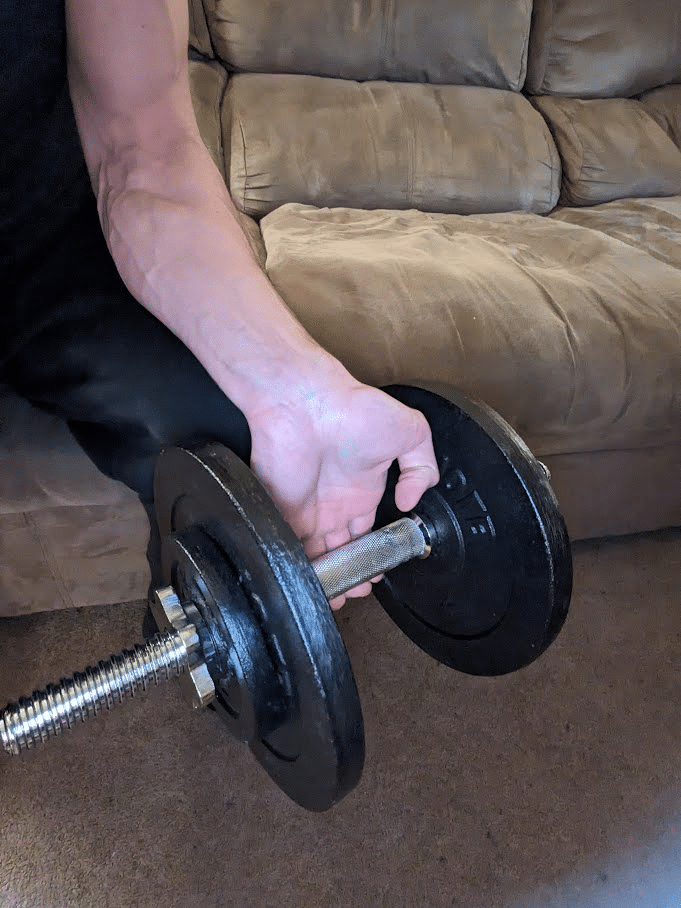

To amplify the stimulus per set offered to the flexor digitorum superficialis, flexor digitorum profundus, and intrinsic hand muscular tissues, I like to recommend that you just carry out pure finger curl reps as soon as you’ll be able to now not carry out wrist curl reps as a result of fatigue. As a result of the lever arm of the load appearing on the metacarpophalangeal joints is shorter than the lever arm appearing on the wrist, ending a set with these finger flexion reps basically acts as a mechanical drop set. This system is just like what I like to recommend for rowing variations to maximise the stimulus offered to the rhomboids and traps, the place you’ll be able to carry out pure scapular retraction reps straight after you’ll be able to now not carry out any extra rowing reps.
Past the potential to induce better hypertrophy, performing wrist curl variations that stretch the flexor digitorum muscular tissues could present extra mobility advantages for lifters who want to enhance their entrance rack positioning. When cleansing and entrance squatting, lifters require a significant quantity of wrist extension vary of movement with prolonged metacarpophalangeal joints to attain a steady clear grip entrance rack. To take action requires a enough diploma of flexibility within the flexor digitorum muscular tissues that could be missing for some lifters. Whereas static stretching definitely can be utilized to extend flexibility, loading muscular tissues in absolutely lengthened positions through resistance coaching can yield comparable flexibility enhancements (132,183).

By utilizing a hand gripper, you even have the flexibility to coach the finger flexion operate of the flexor digitorum muscular tissues in a dynamic method at longer lengths than may in any other case be achieved with most help grip workouts. With a hand gripper, you’ll be able to preserve an prolonged wrist place that lets you load these muscular tissues at reasonable lengths whereas concurrently coaching the smaller intrinsic hand muscular tissues that flex the carpometacarpal joints.

If I may solely carry out just a few units per week of a single accent train to enhance my help grip power for the deadlift over a mesocycle, hand grippers or wrist curls wouldn’t be my high selections. Within the short-term, I’d count on a low quantity of extra particular workouts (e.g., heavy barbell holds) to be best in inducing the specified neural variations that may manifest extra quickly than hypertrophy (14,60). Nonetheless, decrease specificity train might be helpful as a result of ease into which they are often added right into a program and dynamically practice finger flexor muscular tissues at favorable lengths whereas imparting minimal systemic fatigue. You may practice with hand grippers in a number of various environments the place another sort of grip coaching shouldn’t be possible, enabling you to accrue better coaching volumes with out additional time commitments within the health club. Whereas not as handy as grippers, wrist curls can readily be carried out throughout the remaining intervals of different workouts you already practice that don’t tax your grip. Alternatively, you’ll be able to carry out wrist curls at dwelling whereas watching TV you probably have a pair of sunshine dumbbells as a result of they don’t require a lot weight to be difficult to the working muscular tissues. Over time, the hypertrophy that may end result from this methodology of coaching could make a distinction in your long-term grip power potential. With this stated, I nonetheless advocate together with some heavy coaching with the exact sort of grip you prioritize enhancing to induce neural variations particular to that grip.
Fats Grip and Thick Bar Coaching
Together with hand grippers and wrist rollers, fats grip attachments that may be added to barbells, dumbbells, or pull-up bars are among the hottest grip coaching instruments. To my information, fats grip attachments initially grew to become extra broadly utilized when the aptly named Fats Gripz grew to become commercially obtainable in 2009 with a diameter of two.25” (57.15mm), doubling the everyday barbell diameter of 1.1” (28mm). Right this moment, fats grip attachments are available in a wide range of sizes, with diameters often starting from 1.75” (44.45mm) to 2.75” (69.85mm). When fats grip attachments are added to barbell workouts, their utility is sort of just like an axle bar, which regularly has a 2.0” (50.8mm) diameter and is utilized in strongman occasions such because the axle bar clear and press. Whereas usually cheap in comparison with different specialty bars, most industrial gyms and residential gyms lack axle bars, and they’re nonetheless extra expensive than fats grip attachments with out the identical portability.

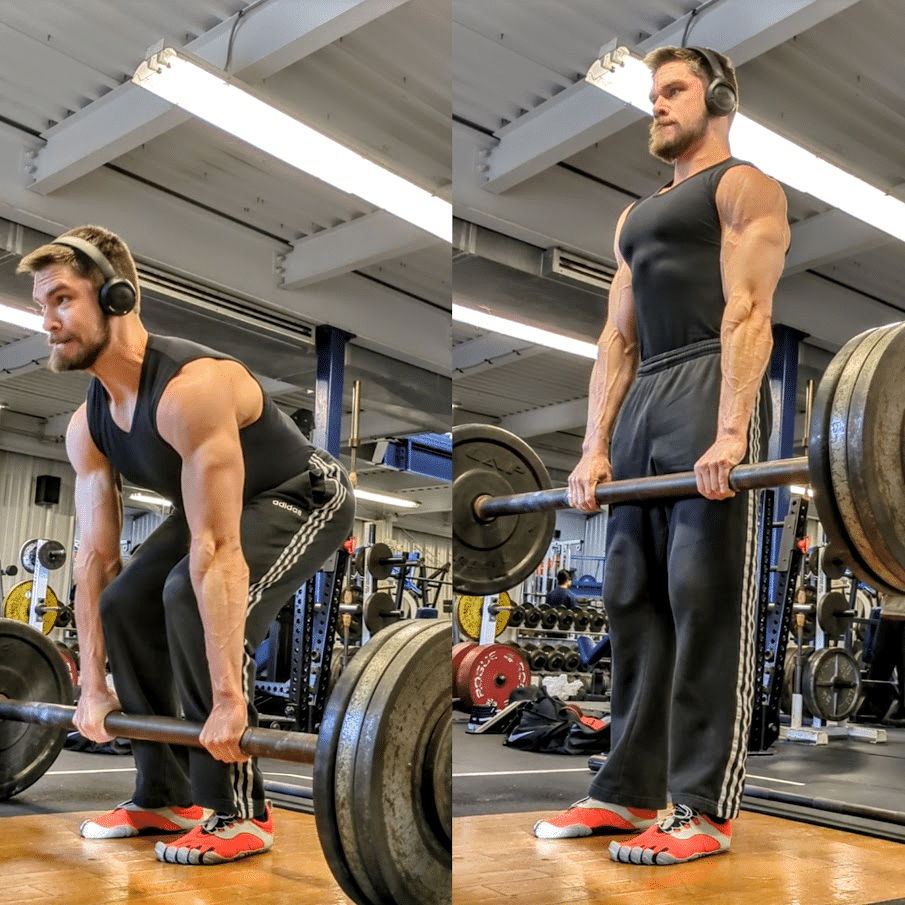
One of many main benefits of fats grip attachments is that they are often added to workouts you already carry out that use a help grip however are usually not notably difficult to your grip power by the point you end the set as a result of fatigue in different muscle teams. For example, once I carry out dumbbell rows with a strict approach, my grip shouldn’t be meaningfully fatigued by the point I end the set as a result of again muscle fatigue. Nonetheless, once I add fats grip attachments, my grip power is noticeably challenged by the point I end the set as a result of again muscle fatigue. If I want to additional amplify the grip coaching stimulus per set, I can merely carry out a static maintain till my grip power fails after finishing the rows. Doing so requires little additional time as a result of my grip muscular tissues are already meaningfully fatigued from the fats grip rows. To make sure that I’m not compromising the stimulus offered to the again muscular tissues, I choose an train variation and kind of fats grip that enables me to carry out an identical variety of reps with the fats grips as I’d have the ability to do with out the fats grips. Doing so permits me to coach grip power extra successfully with out coaching different muscle teams much less successfully, subsequently growing coaching effectivity. Assuming you may have different coaching targets along with enhancing grip power, I’d advocate that you just be considered wherein workouts you determine so as to add fats grips with the intention to not neglect different muscular tissues.
No less than two research (neither of which utilized chalk) have investigated how 1RMs for frequent workouts that use a help grip could also be affected through the use of fats grip attachments or axle bars in comparison with a regular barbell. Krings et al (2021) assessed recreationally lively males as they carried out 1RMs with a double overhand grip for the deadlift, bent over row, upright row, and biceps curl utilizing a regular barbell with or with out 2.2” (5.6cm) diameter fats grip attachments (102). Additionally they examined what number of body weight pull-ups might be accomplished in a single set as a grip endurance metric and reported that their contributors accomplished a median of 11 reps with out the fats grips however solely 3 reps with the fats grips. When utilizing the fats grips, the imply 1RMs of the deadlift, bent-over row, upright row, and biceps curl have been respectively 41%, 30%, 24%, and 5% decrease relative to utilizing the barbell by itself.
Krings et al moreover offered some information on how fats grips could affect muscle activation by measuring EMG activation for eight muscular tissues throughout the aforementioned workouts. A number of forearm muscular tissues (i.e., flexor carpi radialis, flexor carpi ulnaris, extensor carpi ulnaris, and the extensor carpi radialis muscular tissues) have been assessed alongside the triceps, biceps, trapezius, and lateral head of the deltoid. For the biceps curl and upright row, EMG exercise didn’t considerably differ for any muscle when fats grips have been current or absent. Nonetheless, important variations in sure muscular tissues have been current in several EMG outcomes for the opposite three workouts relying on whether or not fats grips have been used. For example, peak EMG exercise of the biceps was decrease when fats grips have been utilized to rows and pullups, whereas imply EMG exercise of the extensor carpi ulnaris was better underneath these situations. With out delving too deeply into the nuances of the assorted EMG findings, the primary takeaway is that fats grips can pose a commerce off wherein elevated exercise of 1 muscle could also be accompanied by decreased exercise of one other muscular tissues throughout sure workouts.
Ratamess et al (2007) additionally examined the 1RMs of resistance educated males as they carried out these 4 workouts along with the bench press and overhead press with barbells having a 1” (2.5cm), 2” (5.8cm), or 3” (7.6cm) diameter (163). For the 2 presses, the 1RMs with the three totally different bars have been comparable, and the 1RMs for the biceps curl and upright row have been additionally comparable with the 1” and a pair of” bars. Unsurprisingly, the best distinction occurred throughout the deadlift the place 1RMs have been 28% and 55% decrease when respectively utilizing 2” and three” bars in comparison with the 1” bar. As was the case for Krings et al, the bent-over row was the second most affected carry, having 1RMs that have been 9% and 33% decrease when respectively utilizing 2” and three” bars in comparison with the 1” bar. When utilizing the three” bar, the 1RMs for the biceps curl and upright row have been additionally 18% and 26% decrease respectively in comparison with with the 1” bar.
The influence that thicker implements can have on the load that may be utilized for any specific train will definitely fluctuate amongst people and be influenced by somebody’s relative strengths, anthropometry, and approach. Normally, lifters who’ve massive palms and robust finger flexor muscular tissues relative to different muscle teams will have a tendency to have the ability to carry out a better number of workouts with thick bars with out compromising how a lot load they’ll use (163). Utilizing a strict approach that minimizes momentum and contributions from muscular tissues that you don’t prioritize strengthening with a given train may also enhance the breadth of train variations for which you need to use fats grips with out worsening the stimulus offered to an train’s prime movers. For example, if I carry out a bent-over barbell row the place I management the eccentric section, have a quick pause on the high and backside of every rep, and hold my knees and hips in a static place for the entire set, I can add fats grips with out sacrificing weight or reps. Nonetheless, if I carry out a “cheat row” the place I dynamically use leg and hip drive to maneuver the load up every rep in an explosive method, utilizing fats grips or an axle bar will significantly restrict how a lot load I can use and make it a mediocre again train.
If you’re an skilled lifter, you could possibly subjectively assess how properly an train focused sure muscular tissues with or with out fats grips. Sensations might be troublesome to speak by phrases and might not be notably exact, however it may be very obvious to a educated lifter when a muscle group is acutely focused by an train. Experiencing a burning sensation and a “pump” as a result of metabolite and fluid accumulation from reasonably high-rep units or a pronounced feeling of pressure within the working muscular tissues throughout lower-rep units can point out which muscle teams a selected train could also be coaching successfully. Like localized muscular soreness which will manifest after coaching, these sensations might be helpful proxies to raised gauge how seemingly an train could also be offering a stimulus of a enough magnitude to induce adaptation in several muscular tissues. These proxies definitely have their limitations and needs to be utilized in live performance with different assessments when guiding programming choices, however I like to recommend being conscious of them when figuring out which workouts so as to add fats grips. If you happen to expertise a notable burning sensation in your forearm muscular tissues when performing a 20-rep set of rows with fats grips however don’t really feel a lot in your again muscular tissues in distinction to while you row with out fats grips, the fats grips could seemingly be detracting out of your again coaching. Nonetheless, should you really feel comparable sensations in your again muscular tissues whereas rowing with or with out the fats grips, this tradeoff between again and grip coaching is much less prone to be current. When making these qualitative observations together with quantifying the variety of reps you’ll be able to carry out with a given weight with or with out fats grips, it is best to have the ability to decide if fats grips deleteriously have an effect on how properly totally different muscular tissues are focused throughout a selected train.
In addition to being added to workouts you already carry out (e.g., strict rows, curls, and shoulder raises) that focus on muscular tissues apart from these concerned with gripping, making use of fats grips to particular grip workouts offers distinct advantages. One such benefit is that fats grip workouts assist you to practice your finger flexor muscular tissues at longer lengths extra conducive to stimulating hypertrophy than when utilizing smaller diameter implements. With impartial wrist place help grip workouts reminiscent of barbell holds and farmer’s walks, fats grips will nonetheless not allow you to coach the finger flexor muscular tissues on the similar lengths that may be reached throughout totally different workouts that load these muscular tissues in an prolonged wrist place. Nonetheless, the extra prolonged finger joint angles ensuing from the addition of fats grips lets you practice these muscular tissues in additional lengthened positions that might in any other case be achieved when performing the identical workouts with smaller diameter implements.
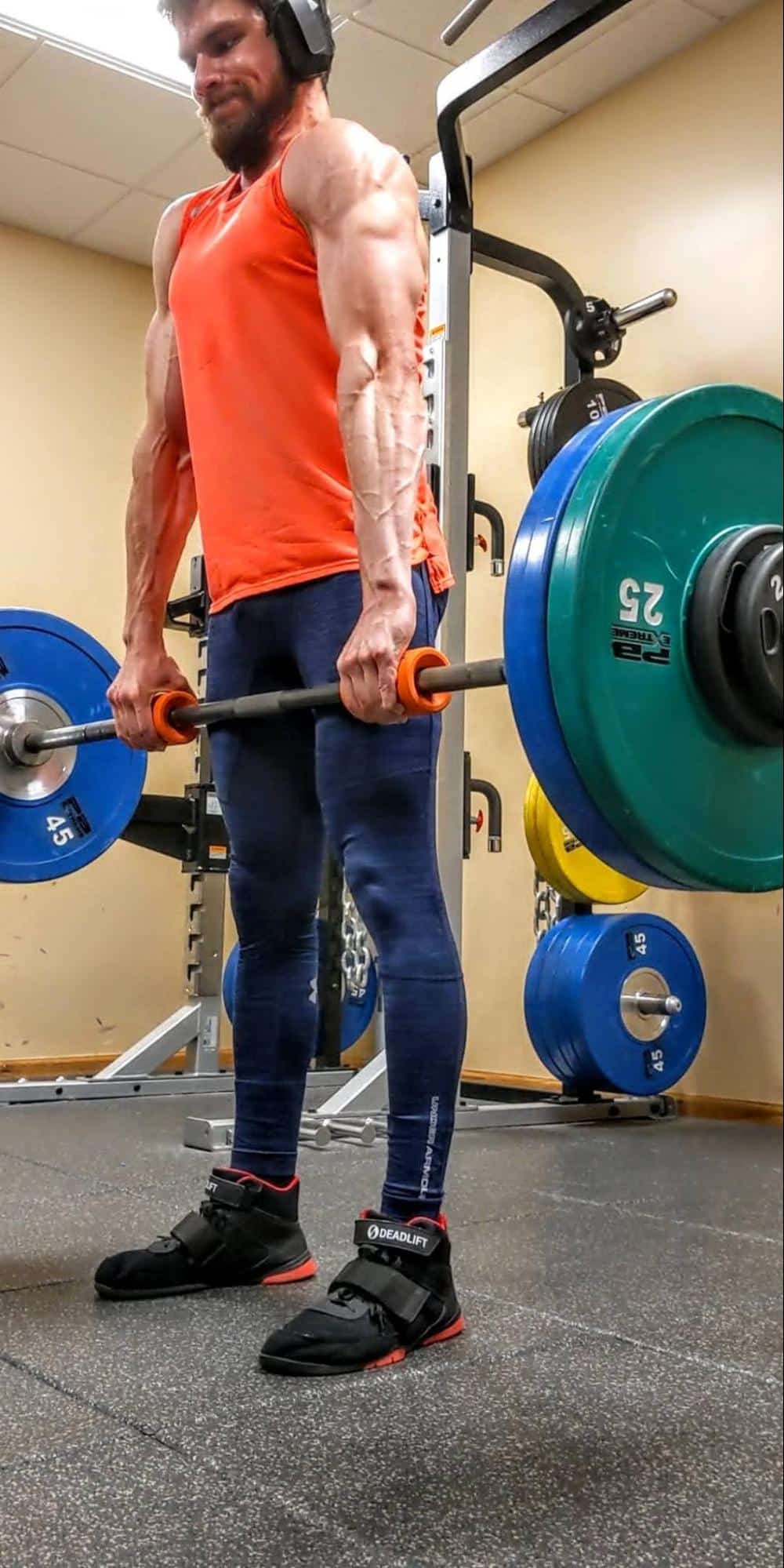
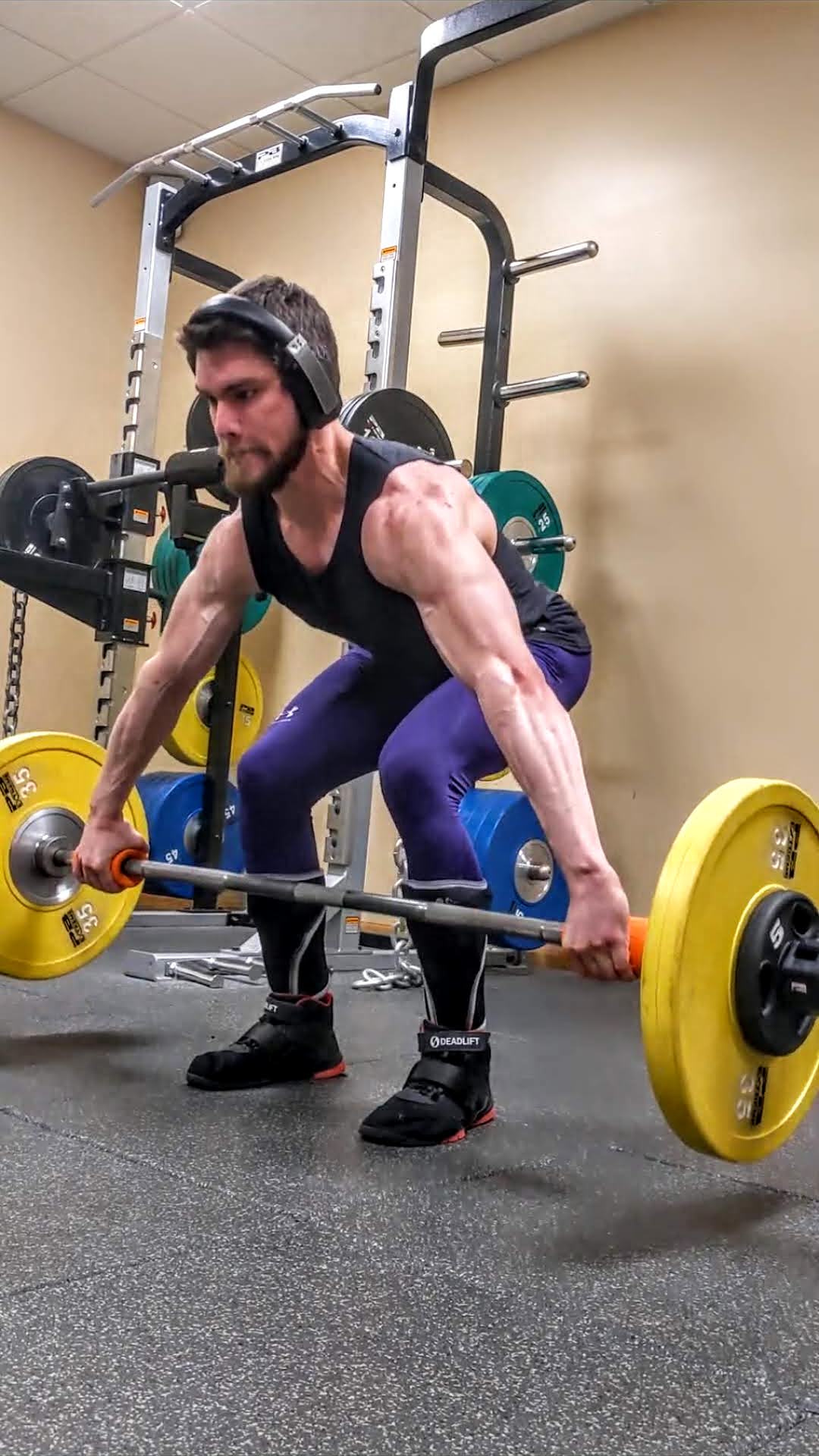
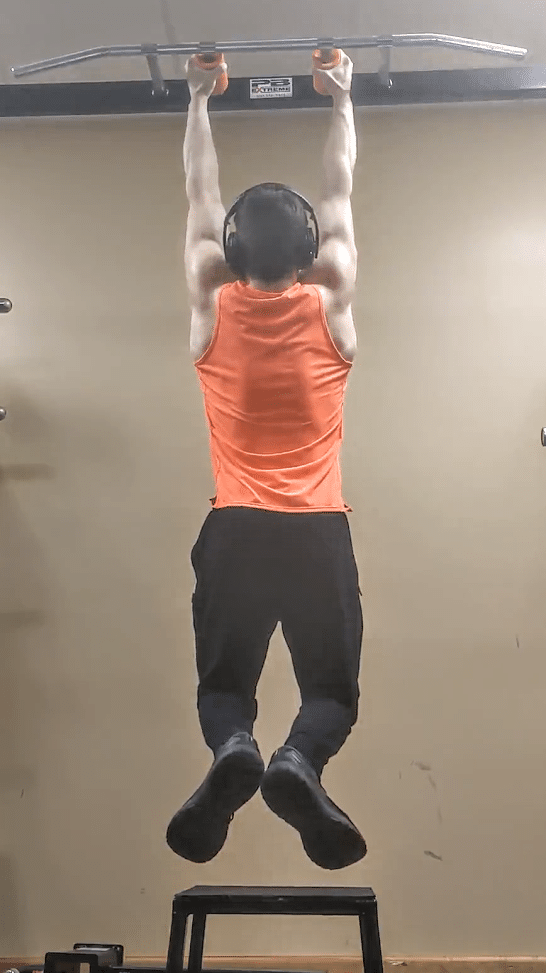
One other profit is that lighter weights will probably be required to supply a grip strengthening stimulus when utilizing fats grips. After already performing deadlift and squat variations, a lifter whose deadlift is restricted by grip power could choose to carry out barbell holds from an above-the-knee rack pull or block pull with the purpose of accelerating grip power particularly for the deadlift. Whereas not inherently injurious by any means, loading the lumbar backbone with compressive forces is a stressor that imposes a restoration price. Lifters who’re already experiencing excessive volumes of excessive magnitude compressing loading from their main lifts could desire to reduce additional spinal loading from their accent workouts. When utilizing a regular diameter barbell, a significant quantity of weight will probably be required to carry out a maintain with a minimum of a reasonably excessive depth. If fats grips are used with these holds, noticeably lighter absolute hundreds will probably be wanted and the train will nonetheless be pretty particular to gripping a barbell.
Whereas looking by the literature, I’ve recognized three research that in contrast the longitudinal results of coaching with or with out the two.25” diameter Fats Gripz. The power outcomes (e.g., pull-ups, deadlifts) of every of those research have been examined with normal diameter bars. Cummings at al (2018) assessed 10 Division 1 collegiate male golfers as they carried out three weekly full-body resistance coaching periods for eight weeks (45). In distinction to the management group coaching with out Fats Gripz, which didn’t expertise any enchancment, the Fats Gripz group considerably elevated drive distance and carry distance over the eight weeks. Related to lifters, entice bar deadlift 1RM, max pull-up reps, proper hand grip power, and left hand grip power have been additionally examined earlier than and after the interventions. With respect to the magnitude of results, the modifications that occurred for these variables didn’t meaningfully differ between teams to any sensible diploma. Medina et al (2017) assessed 14 male collegiate lacrosse gamers who carried out three weekly coaching periods for 5 weeks, the place every session concerned three units to failure of pull-ups (126). Related will increase in grip power, max pull-up reps till fatigue, lat pulldown 1RM, and lacrosse shot velocity occurred in each the group utilizing Fats Gripz and the group not utilizing Fats Gripz for pull-up coaching. Moreover, Rogers (2016) assessed 13 feminine college college students who carried out two weekly typical double overhand deadlift periods for 4 weeks (166). Every session consisted of 25 reps distributed over 5-6 units, and contributors have been permitted to make use of chalk whereas coaching with or with out Fats Gripz. After the intervention, the Fats Gripz and management teams elevated imply deadlift 5RMs respectively by 29.8% and 39.0%. Peak crush grip power elevated by 11.0% within the management group however solely 3.6% within the Fats Gripz group.
When evaluating these three research collectively, fats grip coaching didn’t yield notably spectacular results on grip power in comparison with typical coaching. With out over-generalizing these findings, it’s cheap to say that the addition of fats grips to any train is not going to essentially lead to superior grip power coaching. Nonetheless, it could be misguided to conclude that fats grip coaching can’t be a helpful element of a bigger program that goals to extend grip power. Every of the three aforementioned research utilized totally different populations (none of which have been power sport athletes) and had small pattern sizes, which is a limitation extraordinarily frequent in longitudinal resistance coaching analysis. As with numerous train variations, the potential utility of fats grip coaching is almost certainly context dependent, and the three research in contrast coaching with solely fats grip workouts to coaching with none fats grip workouts. This “all or none” resolution is affordable when designing a managed research, but it surely doesn’t mirror actual world coaching packages. Additional analysis on this subject is required to attract firmer conclusions, however I’d be cautious about relying solely on fats grips for grip coaching simply as I’d be optimistic about their potential utility when sensibly included in a broader program.
Briefly digressing from fats grip coaching, the absence of axial compressive loading is a main motive why useless hangs carried out on a pull-up bar are a helpful grip coaching train. Useless hangs assist you to improve your help grip power whereas concurrently decompressing the backbone and coaching overhead shoulder mobility with a broadly obtainable piece of apparatus. For people with pretty excessive grip power to body weight ratios who might have to hold bilaterally for some time to problem their grip power, unilateral hangs are a easy development that don’t require any additional tools like a dip/pullup belt so as to add weights. When performing a unilateral cling, I like to recommend utilizing your ft or free hand to steadiness in opposition to one thing reminiscent of a rack or doorway to maintain your physique from unintentionally rotating. With this method, the intent is to not press down into the article in order to make the train simpler in your working aspect (until you do want to regress the depth). Reasonably, you need to use your ft or free hand to merely preserve the beginning place you want to practice.
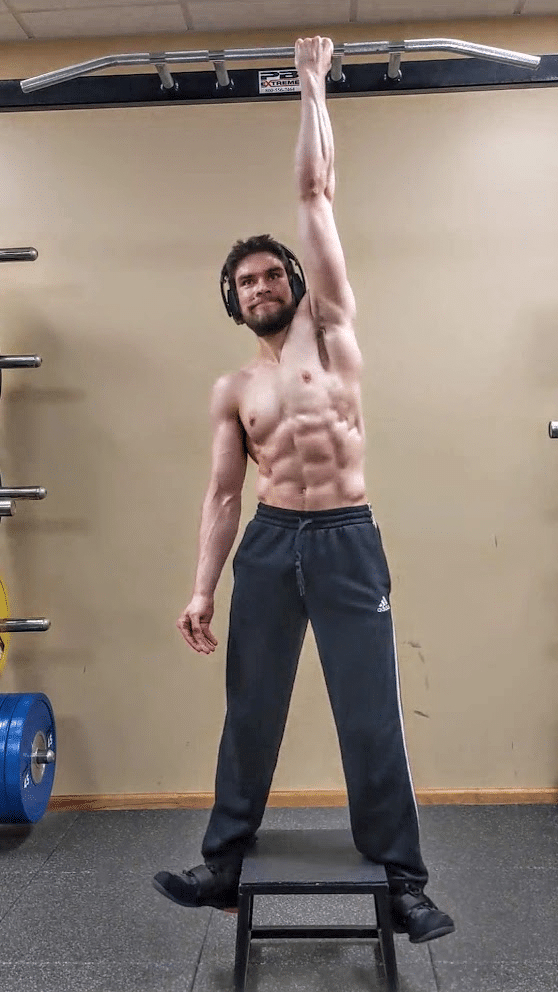

A part of what permits fats grip workouts to problem your grip power with lighter hundreds than normal barbells and dumbbells is the truth that fats grips lack knurling. The knurling discovered on barbells, dumbbells, and metallic pull-up bars makes gripping the implement significantly simpler relative to a easy floor. Even when utilizing a dynamometer, knurling facilitates considerably better grip drive in comparison with utilizing a easy floor (81). With a sure dosage of coaching with tools that has pronounced knurling, it is possible for you to to situation your pores and skin and develop calluses that shield your palms. Nonetheless, your hand pores and skin can solely recuperate from a lot grip coaching with implements which have aggressive knurling earlier than you danger tearing a callus that may intrude along with your coaching and different day by day actions all through the subsequent week. After your hand pores and skin has been sufficiently burdened by coaching with tools that has knurling, you’ll be able to proceed to coach your help grip power with a minimal danger of tearing a callus through the use of fats grips which can be often composed of rubber or silicone based mostly compounds.
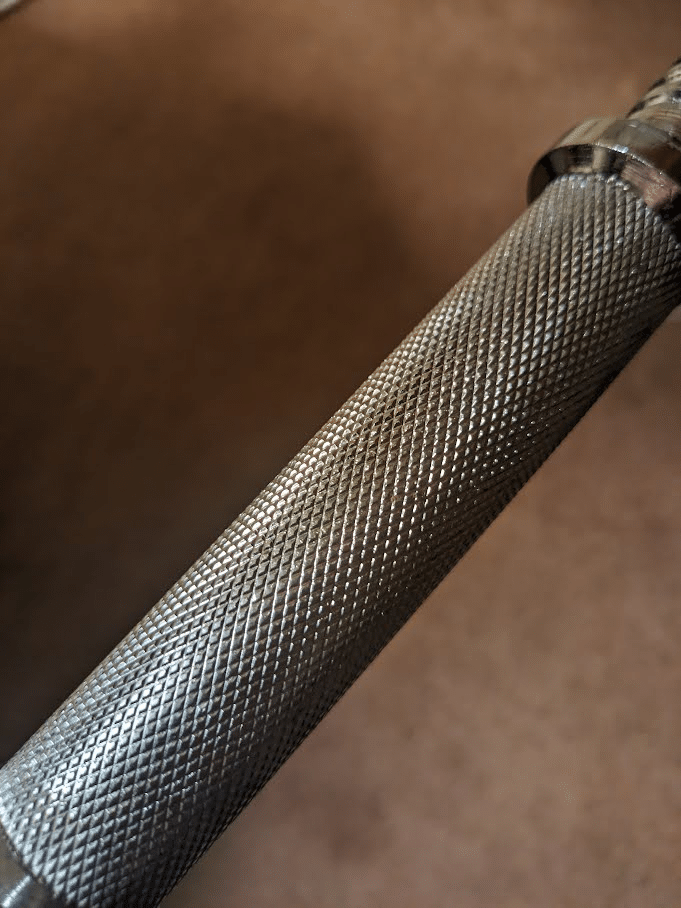

Like fats grip implements, kettlebells generally lack knurling, and heavier kettlebells could have handles which can be thicker than typical barbells and dumbbells. These qualities might be advantageous for coaching your grip with workouts such because the suitcase carry, which is a very helpful loaded carry variation as a result of its means to coach a lot of the core musculature and hip abductor muscles concurrently. Nonetheless, heavy kettlebells are usually not broadly obtainable, partly as a result of their excessive price, so extra skilled lifters could also be confined to performing longer period units with kettlebells that focus extra on grip endurance.
Pinch Grip Coaching
Whereas the effectivity of with the ability to modify many lifts you might be already performing into efficient grip coaching workouts is distinct to fats grip attachments, pinch grip workouts share a lot of their advantages with the added benefit that you do not want to purchase specialised tools. If you want, you definitely can buy specialty units reminiscent of pinch blocks, however you’ll be able to practice the identical sort of train with broadly obtainable weight plates.
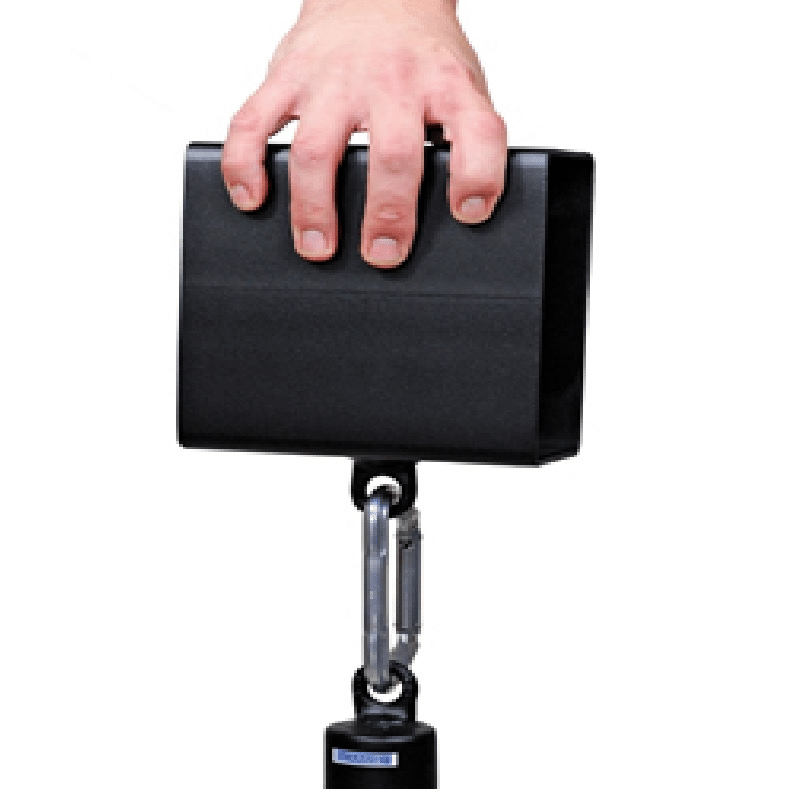
A wide range of totally different weight plates exist with various thicknesses and textures that can have an effect on how difficult greedy a selected load with a pinch grip will probably be. With a thick rubber bumper plate, a single plate could also be sufficiently troublesome for a lot of lifters to carry with a pinch grip, whereas a number of plates could also be required if utilizing thinner iron plates or if an skilled lifter now not finds a single 45lb (20.4kg) bumper plate to be difficult.
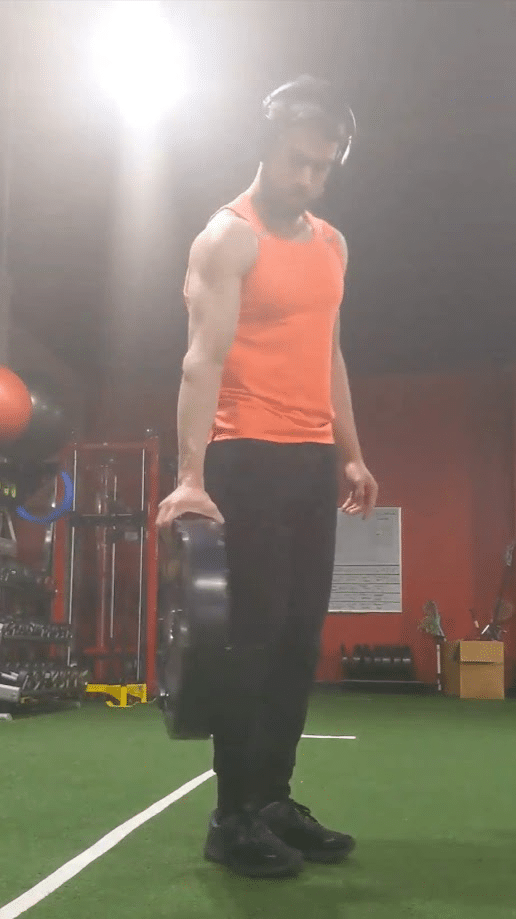

Pinch grip workouts may also be carried out with a dumbbell by holding it along with your fingers unfold aside (i.e. kidnapped) round one finish of the load as the opposite finish of the load is directed towards the bottom. This open-hand pinch grip train is sort of humbling, and you may be restricted to utilizing mild dumbbells that usually present no problem to your grip power when greedy their handles. As the load of a dumbbell will increase, the issue of this train will assuredly enhance from the better load, however the better diameters that heavier dumbbells sometimes have relative to lighter dumbbells could make an much more profound distinction within the problem. Whereas hand measurement and finger size have an effect on efficiency in a wide range of grip workouts, these morphological traits are notably impactful in dictating which dumbbells a person can use for this pinch grip train (59,64). You’ll have world-class grip power however be merely incapable of holding a 25lb (11.3kg) dumbbell on this method in case your fingers are bodily not lengthy sufficient to contact the perimeters of the load. Along with fastened load dumbbells that enhance in diameter as they enhance in weight, adjustable plate loaded dumbbells may be used for this pinch grip train with the appropriate setup.
When an adjustable plate-loaded dumbbell is generally loaded with a lightweight weight, the sleeve could prohibit you from greedy the plate. Nonetheless, should you apply a collar to at least one finish whereas leaving sufficient house between the shaft and the collar earlier than including a weight plate and one other collar, the sleeve could now not forestall you from greedy it with an open-hand pinch grip. When performing a pinch grip train with both a dumbbell or a plate with a raised lip, a delicate shift in finger place can meaningfully affect how troublesome holding a given weight will probably be. Greedy the dumbbell along with your distal phalanges straight on the perimeters of the load with out the center phalanges contacting the load will probably be most difficult. Holding the dumbbell inside your distal interphalangeal joints such that your distal phalanges are nearer towards the underside floor whereas your center phalanges wrap across the high side of the aspect floor will probably be comparatively easier. Equally, a plate pinch train will probably be simpler if you’ll be able to wrap your distal phalanges underneath a plate’s raised lip relative to if you’re holding onto the flat floor.
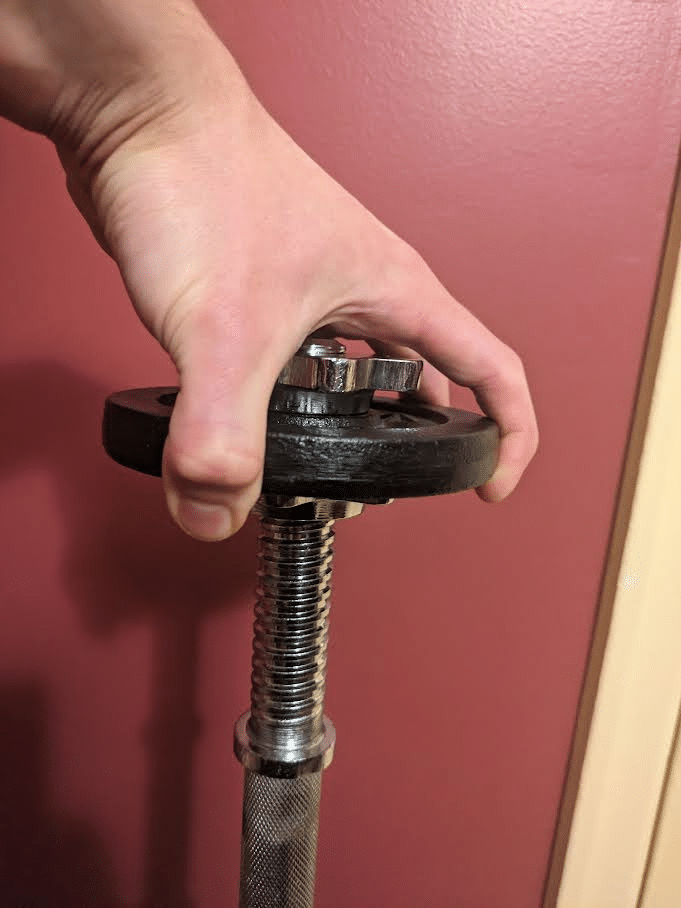
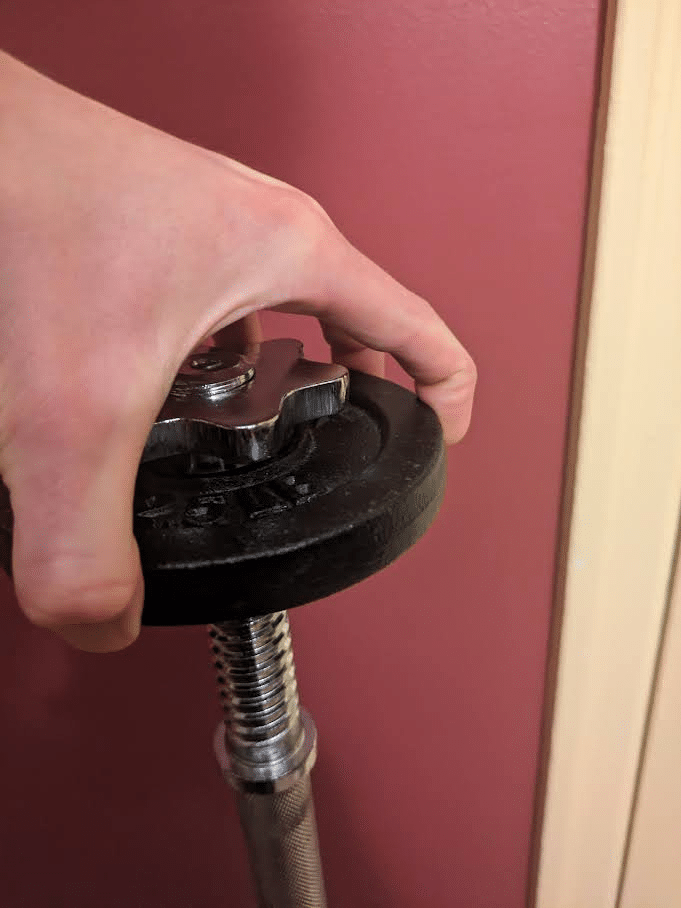
Relative to most help grip workouts with normal diameter shafts, pinch grip workouts will impart decrease axial loading, stress the hand pores and skin to a lesser diploma, and practice the finger flexor muscular tissues at longer lengths. These three qualities are exhibited by many fats grip workouts, however they are often much more exaggerated with pinch grip workouts, particularly with the aforementioned dumbbell variation. Nonetheless, relative to fats grip workouts, pinch grip workouts are usually not as particular to enhancing help grip power, and their means to reinforce different attributes apart from grip power are far more restricted given the train variation constraints.
When incorporating pinch grip train right into a program with both a plate or a dumbbell, integrating it right into a unilateral carry is a high quality choice if sufficient house is offered. Given its load constraints, one of these carry is not going to present the identical stimulus to the core or higher again muscular tissues {that a} heavy dumbbell suitcase carry can. Nonetheless, brisk strolling is helpful in its personal respect for growing power expenditure and offering basic well being advantages, notably in case your health club exercise is your fundamental type of bodily exercise in an in any other case pretty inactive day (96,201). When performing units of pinch carries till grip fatigue, the unilateral variation could assist scale back the chance of dropping a weight in your foot. With the pinch grip, a slight downward motion of the load as fatigue and/or sweat accumulates may cause the load to begin quickly slipping out of your hand. If this occurs, having a free hand lets you information that weight to the bottom in order that it doesn’t unintentionally drop. Having any perspiration in your palms can negatively have an effect on efficiency for any sort of grip train, however its impact is disproportionately better for pinch grip workouts which can be completely reliant upon how a lot friction drive you generate. Consequently having a towel to dry your palms and/or chalk could make a substantial distinction you probably have been working up a sweat throughout your session.
Wrist Extension Train
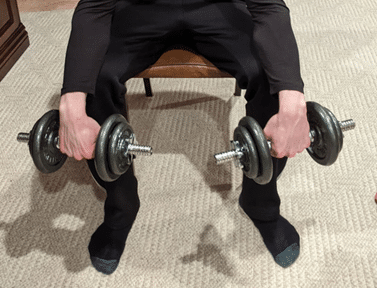
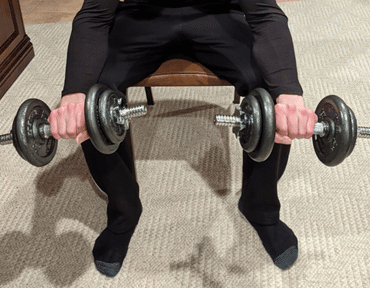
Relative to the beforehand lined grip workouts, the good thing about wrist extension train for somebody who needs to enhance grip power shouldn’t be notably intuitive. Not one of the wrist extensor muscular tissues operate as finger flexors like three of the wrist flexor muscular tissues do. Nonetheless, growing wrist extension power can nonetheless switch to improved grip drive as demonstrated by a resistance coaching intervention that Shiomose et al (2011) performed. After assessing baseline grip drive, the researchers assigned 13 untrained topics to carry out one set of wrist extension workouts 5 occasions per week for eight weeks with their proper palms whereas their left palms served as controls (180). Every set concerned 30 two-second isometric wrist extension reps with an depth equal to 70% of the topic’s maximal voluntary contraction output, two-second inter-rep relaxation intervals, and a impartial wrist place (which was the identical place the place wrist extension power was additionally examined). After the intervention, imply maximal gripping drive elevated within the educated limb by 19.2% and maximal wrist extension drive elevated by a powerful 90.9%. For power athletes, it’s value noting that grip power was examined throughout this research with a circumference of 6.1” (155mm), which is bigger than the three.6” (91mm) circumference of the everyday barbell.
The wrist extensor muscular tissues might help the flexor digitorum superficialis, flexor digitorum profundus, and flexor pollicis longus function at favorable muscle lengths the place they’ll generate maximal finger flexion drive (184). Pressure is actively produced by a muscle by the cyclic formation of actin-myosin cross bridges inside its sarcomeres, that are the purposeful items of its muscle fibers. Relative to reasonable lengths, fewer cross bridges can type at quick lengths, so lively drive manufacturing is submaximal in a shortened sarcomere place.

If the wrist maintains a impartial place when the fingers are in a flexed place, the flexor digitorum superficialis, flexor digitorum profundus, and flexor pollicis longus are shortened and consequently will be unable to generate maximal drive. Given this relationship, maximal grip drive is generally produced in an prolonged wrist place, which analysis has sometimes discovered to be about 20-45° past impartial (112,143,180). Because the diameter of the implement that somebody grips will increase, the optimum wrist angle for producing grip drive tends to be much less prolonged (143). This seemingly happens as a result of thicker implements will permit the extrinsic finger flexor muscular tissues to function at longer lengths in comparison with thinner implements. When making a fist as forcibly as you’ll be able to, you’ll seemingly discover that your wrist naturally strikes into this mildly to reasonably prolonged place. If you happen to initially flex your wrist earlier than making a fist, it’s evident that grip drive is submaximal on this place.
Sustaining the optimally prolonged wrist place throughout an intense crush gripping effort shouldn’t be essentially a simple feat as a result of the flexor digitorum superficialis, flexor digitorum profundus, and flexor pollicis longus generate wrist flexion torque as they flex the fingers. General these three muscular tissues have comparable leverage on the wrist joint because the wrist extensor muscular tissues do (69). Nonetheless, their cross sectional space is bigger than all the wrist extensor muscular tissues mixed primarily as a result of measurement of the flexor digitorum superficialis and flexor digitorum profundus (69). Compounding this measurement distinction, solely among the wrist extensor muscular tissues are properly suited to help with gripping since over half of the wrist extensor muscular tissues additionally operate to increase the fingers (62). Maximally activating the finger extensor muscular tissues whereas gripping could be biomechanically inefficient as a result of their drive would partially be counteracting finger flexion drive.
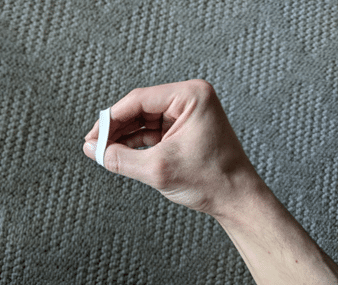
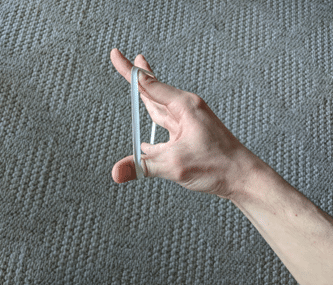
A number of muscular tissues contribute to wrist extension, however solely the extensor carpi radialis longus, extensor carpi radialis brevis, and extensor carpi ulnaris can meaningfully achieve this with out inadvertently producing finger extension torque (17,62,69). Collectively, the cross-sectional space of those three muscular tissues is lower than half that of the flexor digitorum superficialis and flexor digitorum profundus mixed (9,69). Consequently, these three wrist extensor muscular tissues might be fairly challenged in sustaining essentially the most advantageous wrist place throughout a maximal crush grip bout. If these three muscular tissues are weak, somebody could depend on better contributions from the opposite wrist extensor muscular tissues (which additionally lengthen the fingers) to maintain the wrist prolonged whereas crush gripping, which might lead to decrease grip efficiency as a result of their actions on the fingers. Earlier than and after the intervention, Shimose et al measured EMG exercise of the extensor carpi ulnaris and extensor carpi radialis muscular tissues throughout maximal gripping and located their exercise to extend considerably. In distinction, EMG exercise of the extensor digitorum (which capabilities as an extensor for each the wrist and fingers) whereas gripping didn’t enhance following the intervention.

In mild of the findings from Shiomose et al (2011), it’s fairly believable that wrist extension train can switch to improved grip efficiency, however the diploma of carryover seemingly varies relying on the kind of gripping. Past measuring grip drive, the researchers additionally measured “grip power” as a definite variable, which I initially discovered complicated. Grip drive was measured with a tool known as a piezosensor at 16 totally different fastened wrist positions in 10° increments starting from 70° of flexion to 80° of extension. Of those 16 drive measurements, the best was thought of to be maximal grip drive. Usually, grip drive and “grip power” are used as interchangeable phrases, however the researchers moreover examined “grip power” with a dynamometer the place contributors used whichever wrist place they freely chosen. Whereas the distinction reached statistical significance, “grip power” solely elevated by 1.4% after 8 weeks of coaching in distinction to the 19.2% enhance in “grip drive.” From my interpretation of the textual content, the authors didn’t focus on any potential reasoning underlying this discrepancy.
Probably, contributors could have self-selected wrist positions the place their grip drive was submaximal throughout “grip power” testing with the dynamometer. Primarily based on the graphical depiction of how contributors’ grip drive various with wrist angle, it’s obvious that the wrist extension coaching yielded the smallest results in wrist positions that have been very prolonged or flexed. If contributors self-selected wrist positions that have been suboptimal for producing grip drive, they could have did not see a lot of a change in “grip power” with the dynamometer. If this occurred, the values for “grip power” wouldn’t have mirrored the contributors’ maximal potential grip drive that might have in any other case been measured with the wrist nearer to a impartial place.
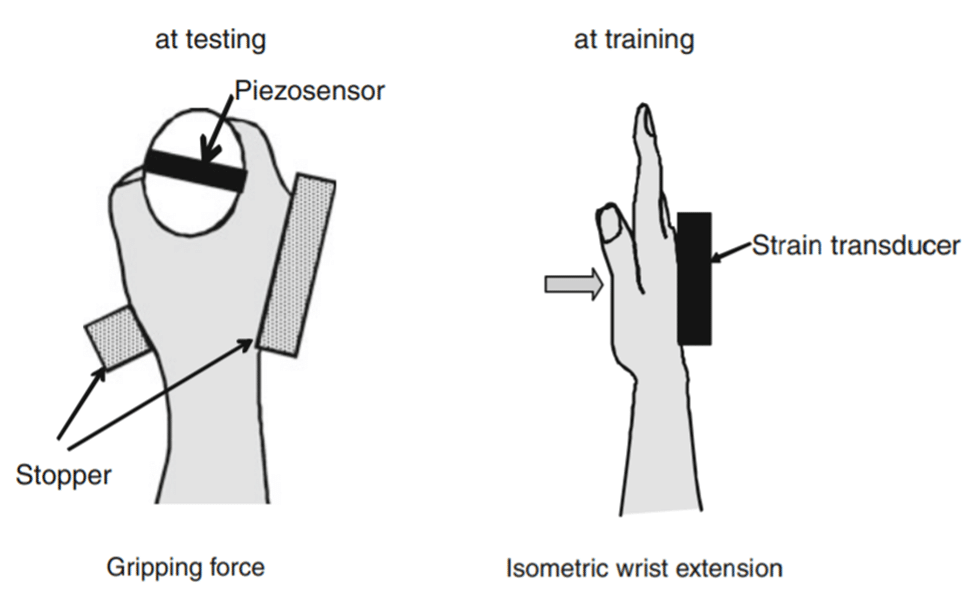
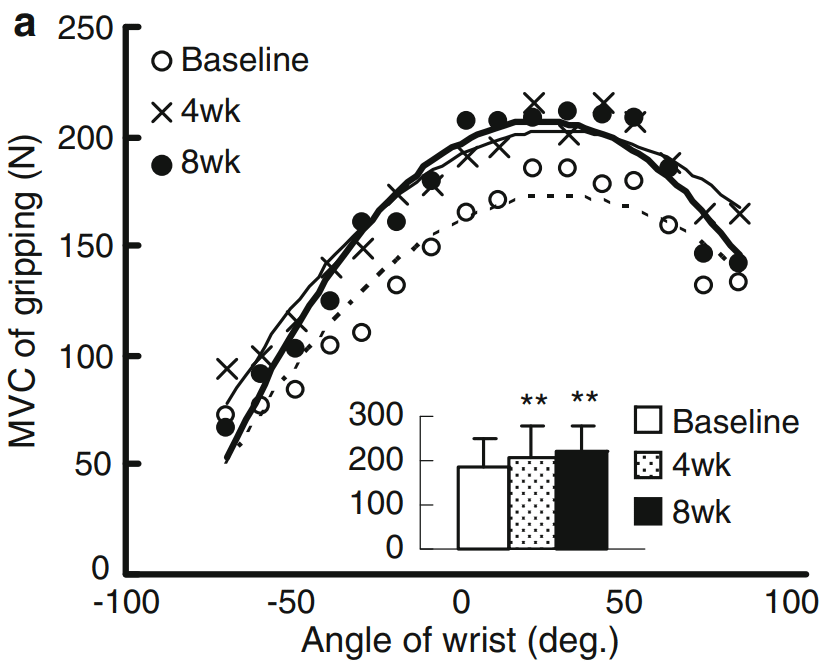
When fascinated by potential carryover to a heavy help grip train just like the deadlift, it’s worthwhile to think about the constraints it imposes on wrist place. Given the gravitational forces appearing on the load being lifted, it merely shouldn’t be possible to keep up an prolonged wrist place to any notable diploma throughout one of these gripping train. In distinction, the wrist is free to maneuver into an prolonged place the place the finger flexor forearm muscular tissues could generate most grip drive throughout a crush grip train, which isn’t resisted by gravity. Consequently, I deem the grip drive modifications examined by Shiomose et al (2011) with wrist place constraints to be extra related to help grip carryover than the “grip power” that was examined with out wrist constraints. From the determine printed of their article, it’s clear that the wrist extension coaching intervention elevated grip drive in a impartial wrist place. Whereas the distinction didn’t attain statistical significance as a result of significant inter-subject variability, the imply wrist place the place maximal gripping drive was produced additionally shifted from 34° to 25° of extension. For people who want to categorical maximal grip drive in heavy help grip workouts, this development towards a impartial wrist place for producing max grip drive is advantageous. As depicted by the determine above from Shiomose et al (2011), imply grip drive was fairly comparable when examined from 0-50° levels of wrist extension after the intervention. Whereas we beforehand lined the mechanism by which wrist extension coaching can switch to grip power with out wrist place constraints, it’s presently unclear to me particularly how carryover happens to gripping when the wrist positions are fastened. With constrained wrists, the manufacturing of wrist extension torque can’t affect the size pressure relationship of the finger flexor forearm muscular tissues. Extra stays to be investigated about how wrist extension coaching could switch to grip efficiency, however its potential worth is promising nonetheless.
If strengthening the wrist extensor muscular tissues can contribute to enhanced grip power, fatiguing them ought to acutely impair grip power, which is what Souza et al (2017) reported to happen (186). Of their research, contributors examined their maximal crush grip power with a dynamometer earlier than and after performing a set of wrist extension workouts loaded with 75% 1RM till fatigue. In distinction to if dumbbells or barbells have been used, the contributors carried out wrist extension train with a strap that circumvented the necessity to grip the load, which may have in any other case straight induced some finger flexor muscle fatigue. Following the wrist extension train, crush grip power was 16% decrease than beforehand, offering additional proof in help of how the wrist extensor muscular tissues contribute to grip power.

Forearm Muscularity
The main target of this text has been on enhancing grip power for efficiency, however the strategies mentioned may also be straight related to lifters who merely want to simply visibly look extra muscular. Aside from the face and neck muscles, the forearm muscular tissues are seen extra usually than practically another muscular tissues within the physique since they are often straight seen when carrying a short-sleeve shirt. Relative to another wrist or hand motion, wrist flexion train will practice the best quantity of muscle mass, so I think about wrist curls to be essentially the most environment friendly sort of train for enhancing forearm muscularity. Wrist extension train can also be helpful for this goal, however its means to stimulate will increase in complete forearm mass will probably be decrease as a result of measurement discrepancy between the muscular tissues within the anterior and posterior compartments of the forearm. Rising the dimensions of the wrist flexor muscular tissues by 50% would add roughly as a lot muscle mass as doubling the dimensions of the wrist extensor muscular tissues (9,69). Nonetheless, wrist extension train is sort of simple so as to add right into a program as a minimally fatiguing antagonist superset with wrist curls, whether or not carried out at a health club or at dwelling with reasonably mild dumbbells. With an antagonist superset, you’d carry out a set of wrist extension train instantly after finishing a set of wrist curls or vice versa. These workouts may also be readily included into non-competing big units (performing three or extra units of distinct workouts in succession that practice totally different muscle teams) with different accent workouts to extend your time effectivity. Every time we think about including new workouts into an present program, time constraints should be thought of so use of non-competing big units is a method I strongly advocate using for a wide range of different muscle groups.
As with hand grippers, I like to recommend initially utilizing hundreds for wrist workouts that assist you to practice in a reasonable to reasonably excessive rep vary, reminiscent of someplace throughout the span of 10-25 reps per set. Throughout every rep, you might be solely shifting the load a small distance in comparison with most different workouts, and a few people could expertise wrist discomfort in the event that they load their wrists in deep ranges of wrist flexion and extension with increased hundreds if they don’t seem to be accustomed to doing so (36,97). Nonetheless, a fairly wide selection of reps can induce comparable hypertrophic responses on a per set foundation if units are taken sufficiently near failure, so be happy to check out totally different rep ranges (173). Whereas deciding on weights for wrist flexion and extension workouts, it’s value noting that wrist extension power has been measured to be 57-60% of wrist flexion power on common (46,121,216). When performing wrist flexion and wrist extension train supersets, you need to use the identical dumbbells for every should you practice flexion within the increased finish of the 10-25 rep vary and extension within the decrease finish. Alternatively, you’ll be able to simply use totally different dumbbell hundreds for supersets, however that won’t at all times be sensible in a busy health club the place you must share tools or time-efficient if utilizing a pair of plate-loaded dumbbells at dwelling.
With respect to coaching quantity, your proximity to failure per set, relaxation intervals, train choice, sleep, food regimen, genetics, intercourse, stress ranges, and up to date coaching historical past could all affect what number of units per week are optimum for inducing muscle hypertrophy. For some populations, low quantity coaching can induce important hypertrophy, however coaching quantity displays a dose-dependent constructive relationship with muscle hypertrophy as much as a sure level (174). The place that time lies for you as a person shouldn’t be essentially simple to find out, particularly since optimum volumes could differ amongst muscle teams and alter over time even throughout the similar particular person. As coaching volumes rise, in addition they impart diminishing returns on hypertrophy, so loads of lifters could not desire to take a position disproportionate time coaching to chase that more and more small profit that separates fairly efficient from optimum. With all of this stated, performing a minimum of 10-12 high quality units per muscle group divided over 2-3 periods is a smart method for muscle teams that you just prioritize growing based mostly on the obtainable information (18,174).
Nonetheless, relative to what number of muscular tissues within the human physique lifters could want to develop, the analysis investigating the connection between quantity and hypertrophy is pretty restricted. Along with measurements of modifications in full physique lean mass, research have investigated the quads, triceps, biceps, hamstrings, and trapezius (with the latter two muscle teams having very restricted analysis) (18,174). To my information, no analysis has assessed how hypertrophy of any forearm muscular tissues is affected by coaching quantity as is the case for many muscular tissues. Past any potential variations in how these muscular tissues could reply to quantity in comparison with these which have been studied, quantifying coaching quantity could be a problem for the forearm muscular tissues that operate as finger flexors. These muscular tissues could also be fairly lively throughout many workouts, and we merely lack any proof that might inform us about how effectively isometric gripping workouts can develop these muscular tissues. Whereas the flexor digitorum superficialis and flexor digitorum profundus represent a significant proportion of complete forearm muscle mass, the finger flexor muscular tissues nonetheless don’t comprise nearly all of forearm muscle mass (31).
If you happen to prioritize growing forearm muscle measurement for the aim of getting extra visibly muscular forearms and do not need grip power targets, I’m unaware of any benefit that gripping workouts have over dynamic wrist workouts. When wrist curls are carried out with the beforehand mentioned finger flexion approach, they are going to practice all the finger flexor muscular tissues concerned with gripping workouts along with different forearm muscular tissues solely successfully educated with wrist workouts. Gripping workouts could yield increased activation of the wrist extensor muscular tissues than wrist curls, however I’ve little doubt that any sort of train can develop these muscular tissues extra successfully than direct wrist extension train (129). With this stated, gripping workouts can definitely serve a task in a program for somebody who strives to induce forearm muscle hypertrophy with out caring about grip power. Particularly within the long-term, train selection might be psychologically refreshing and assist you take pleasure in coaching. Using wrist flexion and extension workouts is simply essentially the most direct option to enhance forearm muscle measurement. Progressing to 10-12 weekly units of wrist flexion and extension train could also be an easy manner to make sure that a lot of the forearm musculature receives a strong hypertrophic stimulus no matter what else is in your coaching program. Will increase in forearm muscle measurement might be achieved with decrease volumes, however the aforementioned set vary (divided over 2-3 weekly periods) is an affordable goal should you actually prioritize growing forearm muscularity.
The Remainder of the Forearm
Given {that a} clear majority of the muscular tissues within the forearm both operate as a flexor or extensor of the wrist, performing a mixture of wrist flexion and extension train will practice a lot of the forearm musculature. Nonetheless, 5 muscular tissues throughout the forearm, which collectively have a complete mass shut to at least one quarter of the overall forearm muscle mass, don’t cross the wrist joint and consequently is not going to be educated by wrist workouts (10,31). One in all these muscular tissues is the anconeus, which lies slightly below the place the distal triceps tendon inserts on the bony prominence in the back of your elbow often known as the olecranon. The small anconeus constitutes about 2.5% of the forearm’s muscle mass and assists the triceps in extending the elbow along with serving a task in stabilizing the elbow joint (10,31). Because of its operate, any elbow extension train you utilize to coach your triceps may also practice your anconeus.
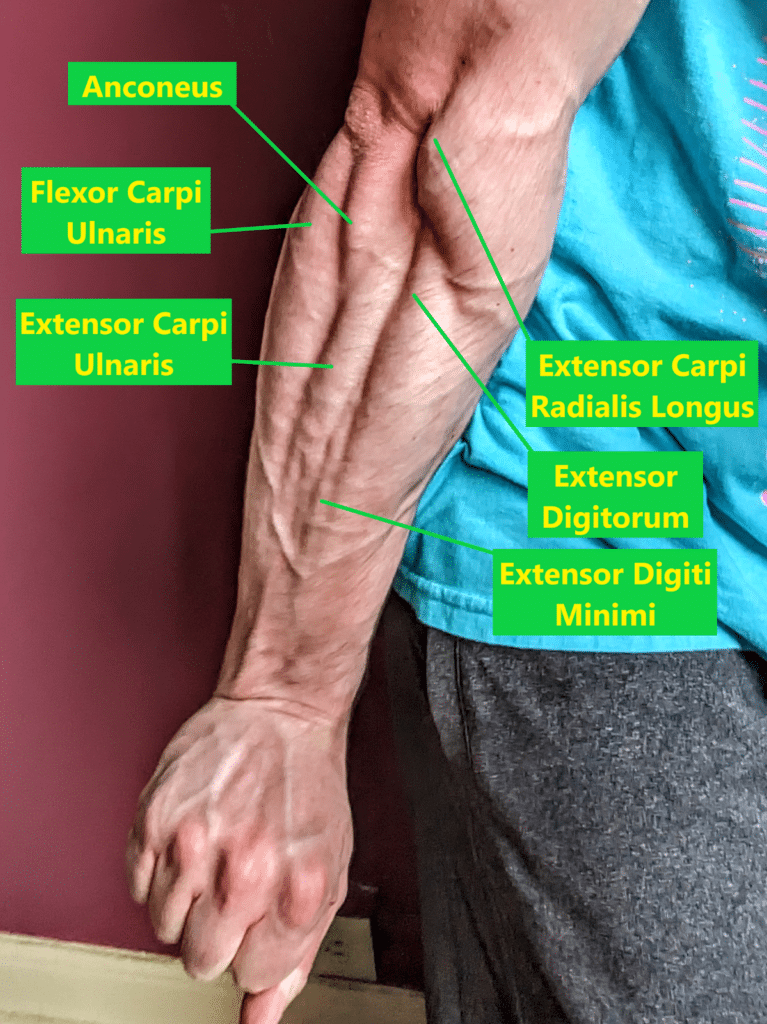
The biggest of the muscular tissues that don’t cross the wrist is the brachioradialis, which has the best peak second arm for producing elbow flexion torque of any muscle within the physique (10,57,136,137,138). Consequently, it capabilities as a main elbow flexor together with the biceps and the brachialis, which each have better muscle volumes and cross sectional areas than the brachioradialis (10,137). All three of those muscular tissues will probably be educated with any train that meaningfully resists elbow flexion reminiscent of variations of curls, vertical pulls, and (to a considerably lesser diploma) rows (68,119). In comparison with utilizing a supinated grip, I’ve beforehand heard lifters and researchers advocate that the brachioradialis might be educated to a better diploma with a impartial grip (e.g., hammer curl) when performing elbow flexion workouts (49,75). Some biomechanical analysis does point out that the biceps has a mildly better elbow flexor second arm with a supinated forearm in comparison with a impartial forearm at sure elbow joint angles, however the identical applies to the brachioradialis, which might nonetheless have better elbow flexion leverage than the biceps with any forearm place (10,139). EMG research, which has its limitations, has additionally indicated that the brachioradialis displays comparable and even better activation when performing curls with a supinated grip in comparison with a impartial or pronated grip (27,37,40,66,105,106,190). Whereas new proof could emerge sooner or later suggesting in any other case, I’m not presently underneath the impression that impartial grip workouts are superior to supinated grip workouts for growing the brachioradialis.
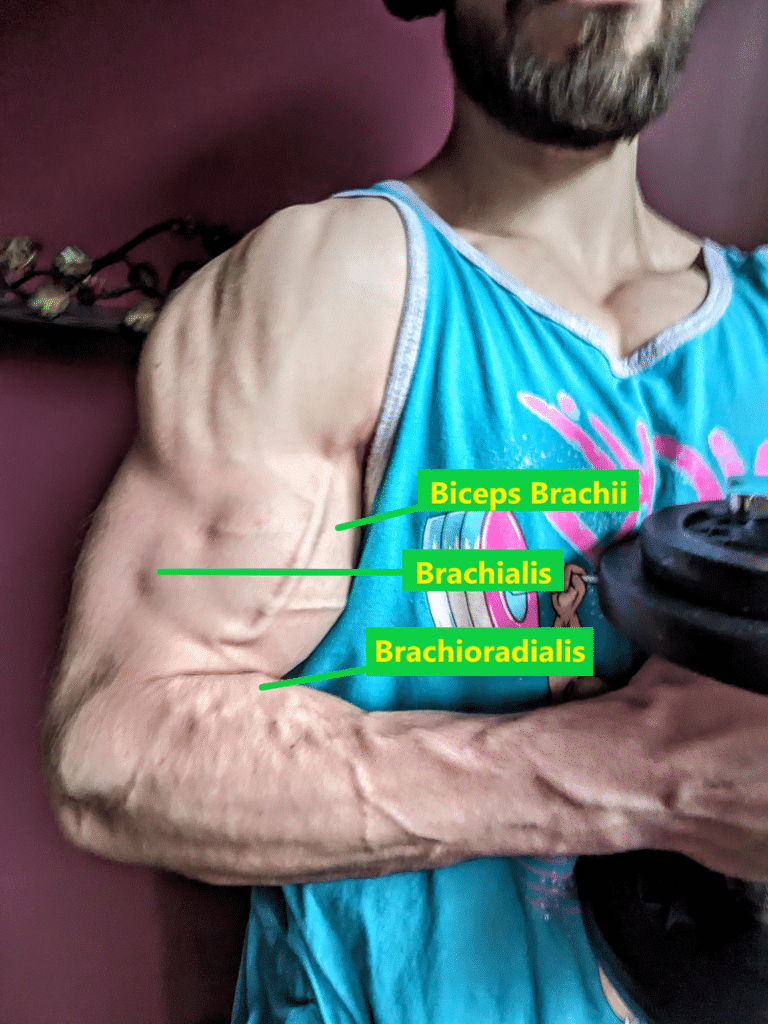

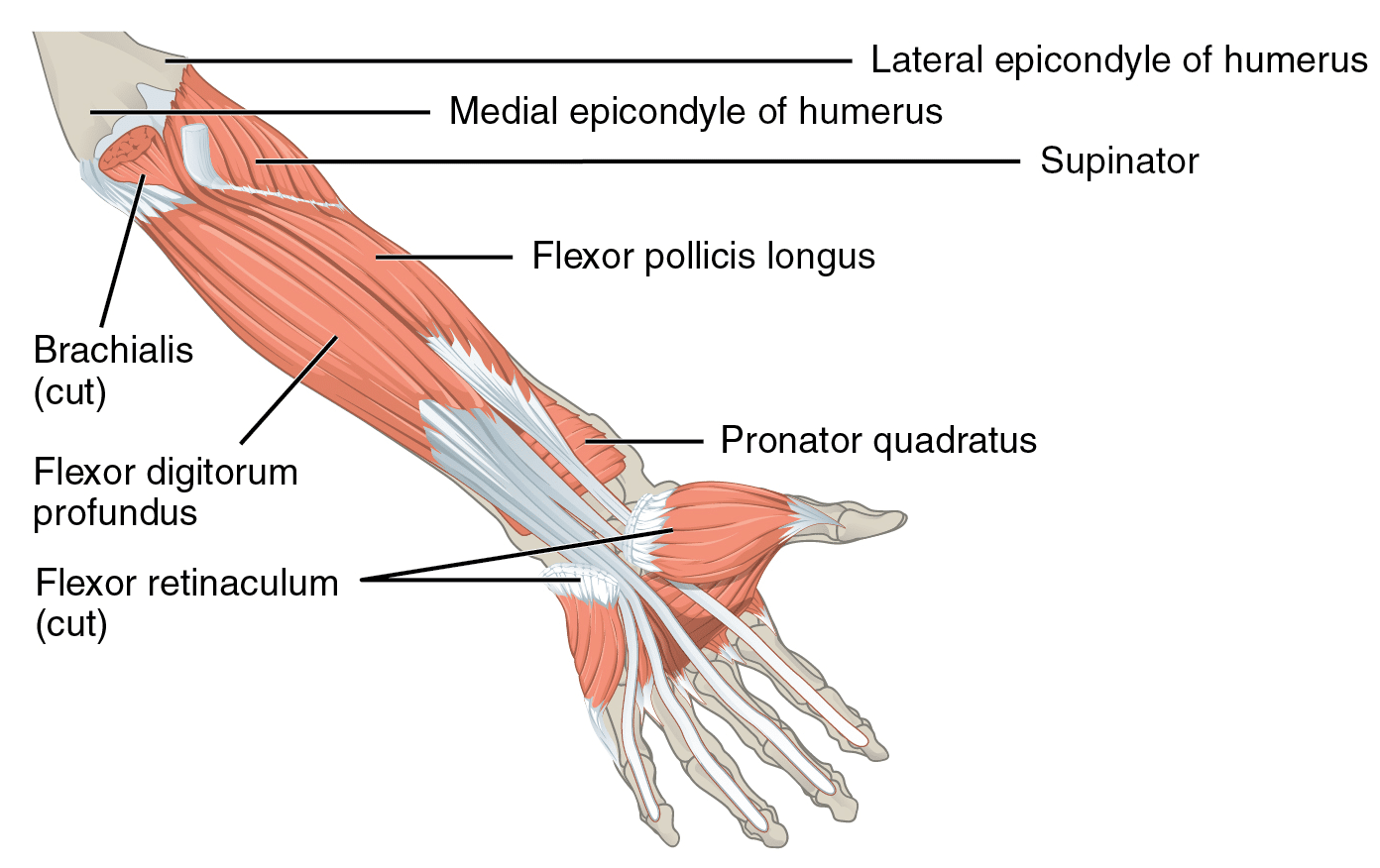
The forearm moreover accommodates the supinator, which capabilities as a main forearm supinator together with the biceps, in addition to the pronator teres and pronator quadratus, which each operate as main forearm pronators (32,57,70,73,139). To variable levels, different beforehand mentioned forearm muscular tissues secondarily help with supination and pronation, however they’ve better leverage to carry out totally different actions reminiscent of wrist flexion or extension (32,57,69,73,139,162). Elbow flexion workouts will practice the biceps (and to a lesser diploma the pronator teres), however individuals not often carry out workouts that straight resist pronation and supination (162,190). Consequently, the first forearm pronators and supinators might not be notably properly developed for a lot of lifters except the biceps. When it comes to aesthetics, their lack of improvement wouldn’t be simply detected since collectively they contribute to slightly over 10% of the overall muscle mass contained throughout the forearm and hand (31). Apart from arm wrestling, pronation or supination power can also be unlikely to have a direct affect on efficiency in most power sports activities. Given the dearth of analysis on the subject, I can’t declare that performing pronation or supination workouts will scale back the chance of sustaining any harm, however it’s biologically believable that these workouts can improve lively joint stabilization and the load tolerance of tendons. For example, the pronator teres could help the wrist flexor muscular tissues and ulnar collateral ligament in stabilizing the elbow joint (which is especially related to baseball pitchers), and its tendon is often concerned with golfer’s elbow (84,147,151,176,200,208).
If you happen to want to carry out pronation or supination train, an asymmetrical weight is a great tool for doing so. An adjustable dumbbell with plates loaded solely on one aspect, a sledgehammer, or a bat can be utilized to coach dynamic pronation and supination in an alternating style the place you cyclically transfer from full pronation to full supination. On common, supination power exceeds pronation power, so that you’ll almost certainly fail the pronation half of this train earlier than the supination half (12). To coach the supinators as successfully because the pronators, you’ll be able to merely end the set with pure supination reps by alternating between pronated and impartial positions. Since there are significantly extra impactful workouts that benefit a better proportion of coaching time, I’d usually advocate treating pronation and supination workouts like different commonly neglected movements should you choose to coach them. Performing 1-2 units twice per week needs to be enough to reap the potential advantages of those workouts in a time-efficient method until you may have a extra particular want (e.g., are a aggressive arm wrestler or are rehabbing an harm).

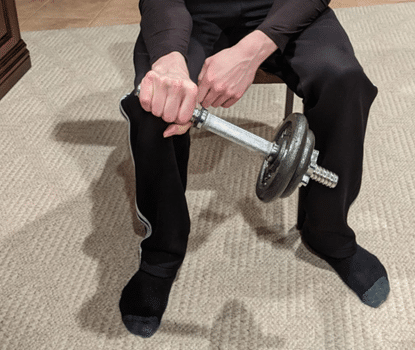
As talked about within the wrist anatomy passage, the wrist joint allows radial deviation (AKA abduction) and ulnar deviation (AKA adduction) along with flexion and extension, which we already mentioned intimately. Like forearm pronation and supination, radial deviation and ulnar deviation workouts might be educated with an asymmetrical weight, reminiscent of a hammer or an adjustable dumbbell loaded solely on one aspect. Alternatively a band could also be used for wrist deviation train. Unsurprisingly, a mixture of radial deviation, ulnar deviation, wrist flexion, and wrist extension workouts can successfully practice extra forearm muscular tissues than solely utilizing wrist flexion and extension workouts. Nonetheless, the addition of wrist deviation workouts offers notably diminishing returns as a result of overlapping wrist capabilities exhibited by forearm muscular tissues.

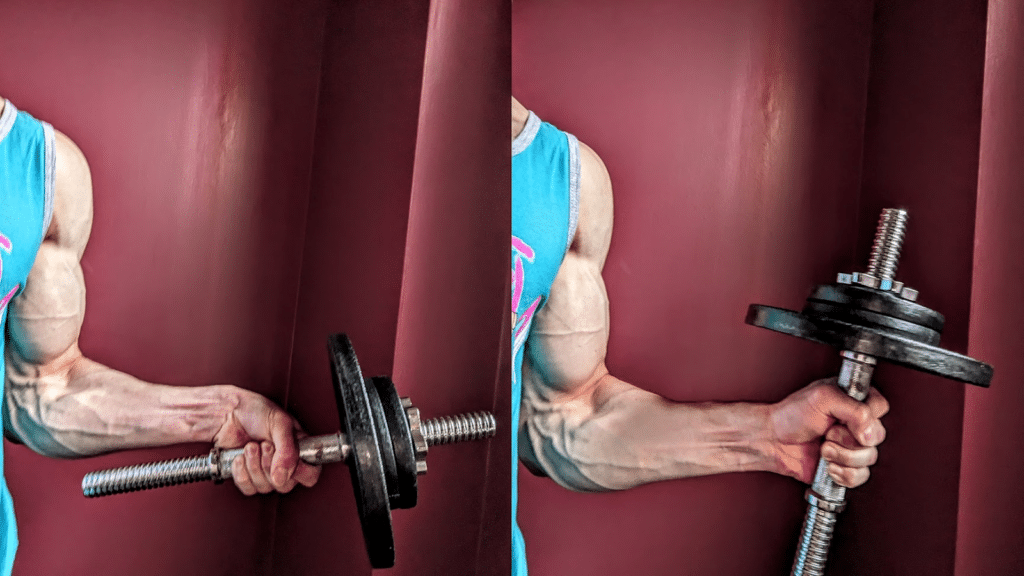

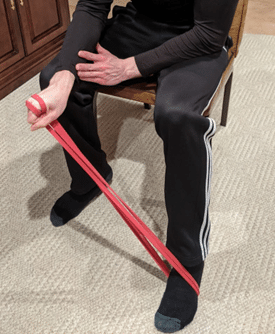
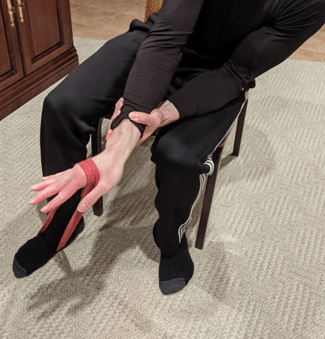
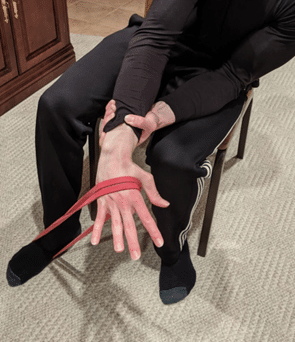
Nearly all of muscular tissues that may meaningfully contribute to radial or ulnar deviation additionally operate as wrist flexors or extensors (69,162). Two muscular tissues that insert onto the thumb, the abductor pollicis longus and extensor pollicis brevis, are exceptions. These two small muscular tissues that represent about 3.5% of the overall muscle mass within the forearm and hand, operate as main radial deviators however can’t meaningfully contribute to producing wrist flexion or extension torque (31,69,162). In distinction, a mixture of wrist flexion and extension workouts can practice the opposite forearm muscular tissues that operate as radial deviators or ulnar deviators. For example, the extensor carpi radialis longus and extensor carpi radialis brevis operate each as main wrist extensors and radial deviators. Equally, the flexor carpi ulnaris and extensor carpi ulnaris operate as ulnar deviators but in addition respectively contribute to wrist flexion and wrist extension. Consequently, radial deviation and ulnar deviation workouts are usually not required to coach a lot of the muscular tissues that contribute to those actions. If you’re striving to attain each gram of forearm muscle mass you’ll be able to presumably attain or have a extra specialised purpose, wrist deviation workouts can serve a task. Nonetheless, they might be a really low precedence for a lot of lifters on condition that coaching time is finite.
Resistance Coaching Intervention Results on Grip Energy
In mild of what we now have lined so far, it’s fairly cheap to hypothesize that resistance coaching interventions consisting of workouts for all 4 wrist actions together with forearm pronation and supination would enhance grip power. Hughes et al (2004) and Szymanski et al (2004, 2006) performed three comparable research the place they respectively assigned collegiate baseball gamers to 6-week interventions or highschool baseball gamers to 12-week interventions (78,194,195). Their management teams carried out frequent resistance workouts (together with squat, bench press, and deadlift), whereas their experimental teams carried out the identical lifts along with workouts coaching the 4 wrist motions together with forearm pronation and supination. After the 2 12-week interventions, crush grip power elevated by comparable levels for every group, whereas neither group considerably elevated crush grip power after the 6-week intervention. In every research, Szymanski et al additionally examined 10-rep maxes for the 4 wrist actions together with forearm pronation and supination earlier than and after the interventions. Predictably, the experimental teams that carried out two units of 8-12 reps for every of the six actions thrice per week skilled considerably better 10RM will increase for every motion relative to the management teams. Given the most important roles the flexor digitorum muscular tissues serve in producing wrist flexion torque, the dearth of superior grip power enchancment from the teams performing barbell wrist flexion train could also be considerably stunning. Whereas these outcomes point out that performing wrist workouts is not going to routinely enhance any sort of grip power, they don’t imply that wrist workouts are pointless for people who want to enhance grip power.
Supplemental workouts which can be programmed with the intent to induce hypertrophy of muscle teams that operate as prime movers in different lifts don’t essentially present fast carryover to these totally different lifts. For example, a powerlifter could full an 8-week mesocycle of offseason coaching that prioritizes development on 8-12 rep units of high-bar pause squats, Romanian deadlifts, and bent-over rows however lacks competition-style deadlifts. The lifter could considerably enhance the load used for these workouts over time however fail to expertise any 1RM enhance within the deadlift whether it is examined straight following that block. Certainly not would this end result point out that these three workouts are nugatory to a powerlifter striving to reinforce his/her deadlift max. In isolation, the supplemental workouts could not essentially yield fast efficiency switch. Nonetheless, they could nonetheless be helpful parts of a long-term coaching program if they assist enhance the dimensions of the deadlift’s prime movers. A interval of coaching the deadlift can subsequently permit a powerlifter to have the rise in power potential from the supplementary workouts manifest as an precise efficiency enchancment.
Equally, a block of wrist workouts has the potential to potentiate better grip power enhancements if particular grip workouts are educated afterwards. Alternatively, performing wrist workouts throughout a coaching block that features some high-intensity grip workouts has the potential to yield better grip power will increase in comparison with if solely the grip workouts are utilized. Moreover, using the beforehand mentioned dynamic finger flexion approach with wrist curls may positively affect carryover to grip power in comparison with the usual wrist curl approach used within the three intervention research.
No research has assessed an intervention with finger flexion wrist curls, however one research has assessed a resistance coaching intervention solely involving dynamic finger flexion train for the index by little fingers. Shim et al (2008) assigned 33 untrained younger adults to a management group that didn’t practice or experimental teams that adopted six-week packages consisting of dynamic finger flexion train carried out for six units of 10 reps with 70% 1RM thrice per week (179). Three totally different coaching teams have been assessed, one in every of which carried out the train with the 4 fingers concurrently, whereas the opposite two teams educated every finger independently. Of the 2 impartial finger coaching teams, one group was directed to attempt to prohibit motion of the non-training fingers throughout the train, whereas the opposite group didn’t obtain this path. Shim et al didn’t check the contributors’ “grip power,” however they did check the maximal isometric flexion drive that they might generate with the 4 fingers concurrently whereas the hand, wrist, and forearm have been stabilized with braces. In distinction to the management group, every coaching group equally elevated maximal finger flexion drive after six weeks by a mixed common of 39%. With the absence of any thumb contribution, this consequence shouldn’t be the identical because the broadly examined crush grip power with a dynamometer. Nonetheless, the magnitude of isometric finger flexion drive produced by the index by little fingers determines a lot of the grip power displayed with all 5 fingers engaged (38).

Simply as crush grip power shouldn’t be the identical as help grip power, so too is the finger flexion power examined by Shim et al not similar to the assorted forms of job particular grip power somebody could want to enhance. Nonetheless, there’s little motive to assume that coaching strategies that considerably enhance isometric finger flexion drive can’t switch to enhanced potential power efficiency when utilizing grips reliant on this drive. When assessing the knowledge lined all through this text so far, finger flexion wrist curls can consequently be helpful parts of a grip coaching program even when superior grip power positive aspects didn’t happen straight after interventions with wrist flexion train.
Whereas trying to find analysis on how totally different grip coaching protocols could have an effect on modifications in grip power, I additionally discovered two research that assigned untrained younger grownup contributors handy gripper train interventions. Berg et al (2018) designed a customized hand gripper machine that allowed dynamic crush grip train to be incrementally loaded with a pulley (20). Throughout a progressively overloaded six-week program, their contributors carried out 4 units of 4 reps for the hand gripper train 4 occasions per week loaded with 90% 1RM. After the intervention, they elevated their common dynamic hand gripper 1RM by 26.5%. Berg et al additionally carried out forearm measurements and calculations to estimate forearm muscle mass of their contributors. Their estimated forearm muscle mass was 2.8% better following the intervention, however this distinction was not statistically important. In a decrease depth research, Sharma et al (2020) assessed modifications in isometric crush grip power examined with a dynamometer after two totally different six-week train interventions (178). The management and experimental teams each carried out crush grip train with a squeeze ball for 10 reps of 10-second squeezes with 2-second inter-rep relaxation intervals thrice per week. The experimental group’s contributors additionally educated with a hand gripper (with 20kg of resistance) as they carried out 10 reps with 2-second isometric actions within the contracted place thrice per week. After the intervention, the experimental and management teams respectively elevated their imply dynamometer grip power by 26% (a statistically important change) and 10.6% (not a statistically important change).

General the findings from Berg et al and Sharma et al that hand gripper train interventions can improve dynamic or isometric crush grip power are unsurprising. Whereas Berg et al and Sharma et al chosen totally different grip power outcomes measures, it’s fascinating to see that every of their experimental teams skilled basically the identical magnitude of grip power enchancment. By utilizing a progressively overloaded intervention with increased intensities and set volumes than Sharma et al, I’d have predicted that the experimental group from Berg et al would expertise a better diploma of grip power enchancment. Nonetheless, comparisons between research utilizing totally different consequence measures that mirror an identical assemble needs to be taken with a grain of salt. Untrained contributors may reply in another way than educated people, who could require extra strong coaching stressors to expertise enhancements in power.
Tennis Elbow and Golfer’s Elbow
Whereas exploring many sides of grip coaching, it’s worthwhile to cowl the 2 most typical forms of grip-related accidents that have an effect on lifters and the final inhabitants. The human physique has a mess of various tendons, however sure tendons are more likely to develop tendinopathy, an overuse harm that basically outcomes from a tendon being repeatedly loaded past its load tolerance with out sufficient time to recuperate (128). Beforehand, the time period “tendinitis” was used to explain this situation, however the suffix “-itis” denotes irritation, which isn’t essentially current in a pathological tendon (6,175). Alternatively, “tendinosis” could also be used to explain structural degradation within the absence of irritation, whereas “tendinopathy” can describe a tendon dysfunction extra broadly and embody pathological modifications that precede degeneration (16). Along with the pronator teres, 4 of the wrist flexor muscular tissues (together with the flexor digitorum superficialis) originate from the frequent flexor tendon on the humerus’ medial epicondyle (7). Equally, 4 of the wrist extensor muscular tissues originate from the frequent extensor tendon on the humerus’ lateral epicondyle, which additionally serves as an origin for the supinator (65). You probably have your arms at your aspect along with your palms dealing with ahead (i.e., supinated), the medial epicondyle is the bony bump on the within of your elbow, and the lateral epicondyle is the bony bump on the skin of your elbow.


Golfer’s elbow and tennis elbow respectively consult with tendinopathy that develops on the medial epicondyle or lateral epicondyle, which clinicians generally name medial epicondylitis or lateral epicondylitis (65). The tendons from different muscular tissues (e.g., extensor digitorum) could also be concerned, however the frequent extensor tendon’s portion akin to the extensor carpi radialis brevis is mostly affected with tennis elbow (142,172). Alternatively, the frequent flexor tendon’s parts akin to the flexor carpi radialis and pronator teres are sometimes affected with golfer’s elbow, which can additionally contain diffuse harm all through the frequent flexor tendon (145). These two accidents can lead to notable elbow ache throughout and after actions which load these tendons, to allow them to develop into significant impediments to lifting and a wide range of different athletic actions such because the sports activities for which they acquired their names. Whereas grip coaching workouts might be fairly painful consequently, different workouts that use the forearm muscular tissues as stabilizers such because the bench press and again squat may also be fairly provocative after the tendinopathy is aggravated. If a tendinopathy has reached a very irritable section, even day by day actions which impart low tendon loading reminiscent of holding a mug of espresso or opening a door can provoke ache (116). As soon as it has developed, tendinopathy can take some time to resolve, and persevering with to load an injured tendon excessively past its tolerance can worsen the state of affairs to the extent that it could develop into a persistent dysfunction (39).


Occupational information from the final inhabitants signifies that the chance of experiencing golfer’s elbow and tennis elbow is considerably elevated for individuals who repetitively carry out forceful actions involving the elbow, forearm, and wrist (47,48,58,182,205). To my information, no research has but to analyze how totally different resistance coaching program variables could have an effect on a lifter’s danger of growing golfer’s elbow or tennis elbow. Correspondingly, I received’t be making any definitive claims as to how programming choices will enhance or lower your danger of experiencing these accidents, nor will I be offering medical recommendation. Nonetheless, I’ve two basic suggestions based mostly on the proof obtainable about tendinopathies and accidents extra broadly and what we find out about golfer’s elbow and tennis elbow particularly.
The primary suggestion is to make use of a gradual quantity development should you want to add among the train variations mentioned all through this text into your program with the intent of enhancing grip power and forearm muscle measurement. Together with many lifts that you could be already be performing, all of these grip workouts will present a coaching stressor to the frequent flexor tendon and/or frequent extensor tendon. With repeated publicity to emphasize, tendons can adapt over time to progressive loading, however a sudden spike in loading to which they’re unaccustomed could enhance the chance that the stress exceeds their capability (100). Individuals who prioritize enhancing grip power could notably discover that it’s simple to overuse hand grippers as a result of their comfort and minimal systemic fatigue. These qualities make them helpful instruments for growing complete coaching quantity, however watch out to not be extreme with what number of units you carry out every week.
Secondly, should you start to note clear signs of both golfer’s elbow or tennis elbow, I like to recommend not merely to push by it with out making any modifications to your coaching. If you’re keen about lifting and dedicated to attaining your targets, it could be fairly tempting to take action, notably as a result of a tendinopathy could initially manifest as solely a gentle ache that doesn’t forestall you from having productive coaching periods early on. What could start as a minor nuisance that may be ignored with some NSAIDs and ice can snowball right into a critical obstacle as weeks after which months move by with out the suitable behavioral modifications.
I count on that basically everybody who has been persistently coaching for years on the very least has skilled a gentle ache or discomfort close to a joint that differs from muscle soreness. Ache is a posh phenomenon, and having a minor ache that develops shortly after a difficult exercise doesn’t essentially imply that an harm occurred and it is best to panic. For example, I’m certain that loads of powerlifters have had a little bit of low again discomfort (that differs from spinal erector muscle soreness) in some unspecified time in the future of their lives a day or two after a troublesome deadlift and squat session. These sensations could happen within the absence of precise tissue harm and resolve in a brief time period. Having a transient bout of delicate low again ache once in a while doesn’t imply {that a} disc herniated in the identical manner that having a little bit of medial epicondyle discomfort for a day doesn’t imply that the frequent flexor tendon is injured. Nonetheless, ache persevering with to persist in a selected space and persistently be aggravated by sure forms of actions is a warning signal that one thing could also be amiss and value addressing. With respect to golfer’s elbow and tennis elbow, the hallmark function of which to bear in mind is ache and tenderness close to the elbow that’s aggravated by gripping actions (84). For golfer’s elbow, ache and tenderness are localized to the medial epicondyle, whereas they’re localized to the lateral epicondyle for tennis elbow. As a result of loading the concerned tendons can provoke ache from tendinopathy, resisted wrist flexion and/or forearm pronation could also be painful with golfer’s elbow (84). Alternatively, resisted finger extension and/or wrist extension could also be painful with tennis elbow relying on which tendon websites are affected (91). Testing whether or not these resisted actions are provocative is a key element of bodily exams that bodily therapists make the most of when assessing sufferers who’re suspected of getting tennis elbow or golfer’s elbow previous to designing their remedy plans. If both situation turns into persistent, elbow ache may be accompanied by weak point in wrist sure actions and grip power deficits (51,157,158,167).
Since I’m not offering any medical recommendation and don’t intend for my suggestion to be misconstrued as such, I’ll briefly clarify a few of what I’d do if I developed signs of golfer’s elbow or tennis elbow. Beforehand I handled a hamstring tendinopathy from working cross nation in highschool that grew to become persistent after pushing by it after which patellar tendinopathy from bounce coaching that took over a 12 months and a half to resolve due to short-sighted resolution making on my half. A pair years in the past, I additionally developed golfer’s elbow from resistance coaching after a block of heavy weighted pullups and chinups. Nonetheless, I used to be in a position to resolve this tendinopathy in a a lot briefer time period after making use of what I realized from the prior accidents and intensive studying into tendinopathy analysis and medical follow.
If I observed new signs of golfer’s elbow or tennis elbow in my quest to extend grip power, the very first thing I’d do is quickly scale back my quantity of grip coaching and chorus from the notably aggravating actions. For example, if hand grippers, pull ups, and heavy combined grip deadlifts have been essentially the most provocative actions, I could substitute in lighter cable pulldowns with very strict approach for pull ups, carry out heavy deadlifts with straps, and take a break from hand grippers all collectively. The amount required to keep up power is decrease than what’s required to extend power, so grip power shouldn’t meaningfully lower if a pair weeks of coaching are carried out with one third of prior grip coaching quantity (22).
Whereas decreasing the amount of the notably irritating actions, I’d recurrently carry out low velocity (e.g., three-second concentric section and three-second eccentric section) forearm workouts that straight load the tendons originating on the painful website. For example, I’d seemingly make the most of wrist flexion, radial deviation, and forearm pronation workouts to handle golfer’s elbow. Alternatively, I’d seemingly use wrist extension, radial deviation, forearm supination, and finger extension workouts to handle tennis elbow. Repeated loading in extra of the tendon’s load tolerance is what contributes to the event of tendinopathy within the first place, however correctly utilized loading can also be a key element of tendinopathy rehab as a result of its means to extend a tendon’s load tolerance. As with patellar and Achilles tendinopathies, the obtainable physique of proof signifies that resistance coaching interventions can function viable remedies for tennis elbow (34,42,44,92,113,135,150,160,188,189). Nearly all of resistance coaching interventions assessed for his or her potential to deal with tendinopathies have been eccentric solely in nature, however there is no such thing as a proof indicating that typical concentric-eccentric resistance coaching could be any much less efficient (21,43,100,189). For tendinopathy remedy, eccentric-only train is probably going superior to concentric solely train, however interventions composed of each concentric and eccentric actions have been equally efficient to eccentric solely packages (21,85,100,155,189). Golfer’s elbow is significantly much less frequent than tennis elbow (even amongst golfers paradoxically), and this discrepancy is mirrored within the quantity of analysis that investigates remedy for these two situations (84,124,181). Along with a case sequence that lacks any management group, I used to be solely capable of finding a single randomized trial assessing the potential of an train intervention to deal with golfer’s elbow, and it lasted solely 4 weeks with 15 contributors within the train group (5,193). Consequently, there’s a notable hole within the present physique of literature, however it’s fairly believable that golfer’s elbow may reply in a fashion just like different tendinopathies in response to resistance coaching.
Blended Grip Deadlifts & Biceps Tendon Ruptures
A number of research have examined how deadlifting with straps could differ from doing so with out straps, however the analysis has focused on utilization of the double overhand grip when pulling with out straps (41,61,86,87,88,89,198). For non-powerlifters who want to deadlift to extend power and muscularity within the posterior chain, solely utilizing straps for work units is a very viable method, particularly if different workouts are used to straight practice the forearms. When opting to not use straps, some lifters could solely deadlift with a double overhand grip, however it could possibly severely restrict the load skilled lifters can pull. To cut back the probability of the bar rolling out of their palms, the combined grip or hook grip could alternatively be used. Of those two choices, leisure and aggressive lifters alike generally use the combined grip (AKA alternate grip), the place one forearm is pronated whereas the opposite is supinated. The combined grip requires some coaching expertise to adapt to utilizing it, however the time wanted to develop proficiency whereas pulling with it’s significantly lower than the hook grip, which may really feel very uncomfortable on a lifter’s thumbs (202). Nonetheless, some people are involved in regards to the potential to develop muscle imbalances because of persistently pulling with a combined grip. This may increasingly immediate some individuals to alternate which aspect is supinated from set to set, however I doubt that follow is worth it for many lifters.

To my information, just one research has in contrast muscle activation between combined grip deadlifts and double overhand deadlifts (19). Beggs (2011) assessed 10 educated contributors with a median typical deadlift 1RM of 202.5kg (446.4lb) as they carried out 3 units of two reps with 60% 1RM and 80% 1RM. When initially testing their deadlift 1RMs, contributors have been free to make use of straps or whichever grip they most popular. Given the most important limitations of the double overhand grip for educated lifters, contributors have been additionally free to make use of straps throughout the double overhand grip trials at 80% 1-RM, which all of them opted to make use of. Nonetheless, straps have been explicitly prohibited when deadlifting 60% 1RM. Because the contributors deadlifted, Beggs measured the EMG exercise of the appropriate and left biceps, brachioradialis, higher entice, and higher lat. Deadlifting with a combined grip yielded considerably better EMG exercise of the biceps on the supinated aspect in comparison with the pronated aspect of the combined grip trials or both biceps within the double overhand and straps situations. Common brachioradialis activation additionally exhibited a development of decrease activation on the supinated aspect relative to the pronated aspect throughout combined grip deadlifts. Nonetheless, higher entice and higher lat EMG exercise have been comparable whatever the grip used for deadlifting. Asymmetrical activation of different muscle teams or muscle areas not measured probably could also be current throughout combined grip deadlifts. Nonetheless, the online impact on total aspect to aspect variations in muscle measurement and power should be insignificant when combined grip deadlifts are included in a program that trains these muscular tissues symmetrically with different workouts. Extra of a hazard than growing any potential delicate asymmetry is the elevated danger of sustaining a distal biceps tendon rupture imparted from a combined grip.
Whereas uncommon within the basic inhabitants, the distal biceps tendon of the supinated arm is extra inclined to rupture in males who deadlift (90,95). Empirical information on the matter is unavailable, however I count on that the chance of this rupture could be elevated if a deadlift is initiated with slight elbow flexion on the supinated aspect in a “grip and rip” fashion. Doing so may lead to that elbow quickly extending underneath a really heavy load, imparting appreciable eccentric loading right into a stretched distal biceps tendon. Along with combined grip deadlifts, distal biceps tendon ruptures have additionally been recorded to happen throughout biceps curl variations and strongman occasions such because the tire flip and atlas stone carry. Whereas I can’t make any definitive claims, distal biceps tendon ruptures probably could also be extra prone to happen throughout a free weight preacher curl relative to different curls as a result of its power curve. When gravitational drive is offering resistance throughout a free weight curl, resistive torque peaks when the horizontal distance between the load and elbow joint is biggest, which happens when the forearm is perpendicular to the bottom. Throughout a regular curl along with your higher arms held close to your sides (i.e., having near about 0° of shoulder flexion), your forearms will probably be horizontal to the bottom when your elbows flex to about 90°. In distinction, your elbows will probably be in decrease angles of flexion when your forearms are horizontal to the bottom throughout preacher curls as a result of flexed shoulder place. This leads to resistive torque peaking at longer muscle lengths for the biceps throughout free weight preacher curls in comparison with normal free weight curls or curls carried out with cables or machines that present a fair stage of resistance all through the ROM. The diploma to which the biceps are lengthened when resistive torque peaks throughout a free weight preacher curl will fluctuate relying upon the slope of the preacher curl pad and the seat place a lifter selects. Along with utilizing a pad that’s extra horizontally inclined, using a decrease seat peak or sitting additional again can contribute to a extra flexed shoulder place that shifts peak resistive torque to extra prolonged elbow angles. Primarily based on footage, if a distal biceps tendon ruptures throughout a preacher curl, it seems to be almost certainly close to the top of the eccentric section when the elbow is in a low angle of flexion and the tendon is loaded in a reasonably lengthened place.

For lifters who intend to carry out free weight preacher curls, I usually advocate that they choose reasonably mild hundreds (i.e., enabling a minimum of 12 reps per set) that they’ll management by a full ROM with a sluggish eccentric section. Some lifters deliberately keep away from the extra prolonged elbow angles throughout preacher curls by performing partial ROM reps with weights which can be too heavy to regulate by a full ROM. The priority with that method could be if a lifter unintentionally strikes into extra prolonged elbow angles with a weight that exceeds what somebody may transfer concentrically from prolonged joint angles. If this happens, the biceps tendon could be subjected to supramaximal eccentric loading in a stretched place which isn’t educated by flexed elbow partial ROM curls. As with different accidents, an abrupt spike in coaching quantity additionally has the potential to extend somebody’s probability of a tendon harm (29,30,50,79,118,140). Consequently, a gradual workload development is prudent for workouts that impart excessive loading to the biceps tendon in a stretched place simply as it’s sensible when incorporating gripping workouts that we beforehand mentioned.
Conclusion
If you happen to prioritize strengthening a selected sort of grip, reminiscent of a combined grip or hook grip for the deadlift, the accent workouts mentioned on this article might be helpful instruments to make the most of alongside increased specificity coaching. After you have tailored to utilizing a selected grip, you do not want to coach that precise grip with a excessive frequency method to progress. Gripping one thing heavy shouldn’t be a technically complicated maneuver, however a minimal frequency of publicity to a selected sort of grip continues to be vital to making sure that extra basic coaching is ready to switch successfully. Performing a excessive quantity of basic grip coaching for just a few months can enhance your potential deadlift power with a combined grip or hook grip, however these grips can really feel fairly awkward should you chorus from coaching them for too lengthy. Even should you choose to not practice with these particular grips intensely on a frequent foundation, I like to recommend using them with a least some extent of regularity for submaximal coaching, reminiscent of mild velocity pulls. As with every different aspect of coaching to reinforce efficiency, some trial and error could also be required to find out what stage of specificity is perfect for you as a person. Whereas a lot information might be gained by exploring the obtainable physique of empirical proof, coaching is each an artwork and a science. A wide range of means can be utilized to succeed in sure targets reminiscent of growing grip power and forearm muscle measurement. By way of this text, I hope that you’re now higher geared up to make the most of these totally different approaches in pursuance of your individual particular person targets.
Whether or not you attempt to extend grip power or develop a extra muscular trying physique, direct coaching of the forearm muscular tissues could be a helpful element of your program. Whereas different muscular tissues play a task, no two are extra impactful to both pursuit than the flexor digitorum superficialis and flexor digitorum profundus, which flex the finger joints and the wrist. Coaching these highly effective muscular tissues together with different muscular tissues within the forearm and hand might help enhance long-term grip power and forearm muscle measurement concurrently.
Summaries
As you’ll be able to readily see, this text is sort of prolonged and actually delves into the small print that may assist you draw your individual conclusions and apply the obtainable physique of proof to your individual distinctive state of affairs. Because of this size, having some concise summaries about the important thing factors for every coaching methodology may also be helpful.
Extraordinarily excessive specificity help grip coaching (e.g., coaching heavy combined grip deadlifts to extend combined grip power for the deadlift)
Execs:
- Only for inducing neural variations which have biggest fast switch to the particular grip power
- Might assist will increase in muscle measurement stimulated by different workouts switch to better efficiency with that particular grip
- Can enhance confidence when executing that particular train
- Facilitates enhancements in approach for that particular train
- Might enhance the load tolerance of sure tissues in a fashion troublesome to copy with different workouts
Cons:
- Coaching volumes could also be restricted by different components apart from restoration of forearm and hand muscular tissues (e.g., lumbar buildings as a result of excessive axial loading, hand pores and skin as a result of knurling)
- Seemingly suboptimal for exciting forearm and hand muscle hypertrophy and subsequently unlikely to maximise long-term grip power potential when used solely
- Could also be extra globally fatiguing than different workouts
- Requires tools which will solely be obtainable to you in a health club
Similarities amongst coaching with hand grippers, fats grips, and dynamic wrist workouts
Shared professionals:
- Seemingly more practical in stimulating forearm and hand muscle hypertrophy than typical help grip workouts, which may enhance long-term power potential for numerous grips
- Volumes unlikely to be restricted by restoration of muscular tissues apart from these within the forearm and hand
- Might impart decrease world fatigue than very excessive specificity coaching
- Unlikely to tear a callus
- Can be utilized to coach grip power if an harm precludes excessive specificity coaching
Shared con:
- Suboptimal for inducing neural variations particular to a special sort of grip, so switch to a special sort of grip could also be restricted if extra workouts are usually not carried out whereas utilizing that particular grip
Hand gripper coaching distinct professional
- Extraordinarily handy within the sense that it may be carried out practically anyplace
Fats grip coaching distinct professional
- Might be very time environment friendly when fats grips are added to workouts you already carry out
Dynamic wrist workouts distinct professional
- Seemingly the best methodology of accelerating forearm muscle measurement
Pattern Coaching Packages
Optimum outcomes sometimes require individualized plans, however pattern coaching packages for various targets also can assist present a stable place to begin as to how this data might be utilized in a fashion that will probably be helpful for many individuals. If you happen to choose to make the most of one of many pattern packages as a template, I like to recommend progressively constructing as much as the volumes they embrace over the course of a number of weeks. For example, you’ll be able to start with two units of a selected train within the first week and add one or two units every week till you attain the variety of weekly units you want to persistently carry out. After you have acclimated to performing the set volumes within the pattern packages for a handful of weeks, you’ll be able to steadily enhance the amount you probably have extra time obtainable to coach and want to enhance your charge of progress. Within the pattern packages, you’ll discover hand gripper workouts and fats grip workouts are usually not included. I didn’t particularly program them as a result of I usually advocate performing them when they’re most handy to you as a way of accumulating better forearm coaching volumes with out investing additional time coaching. Moreover, some individuals don’t personal hand grippers or fats grip attachments, they usually sometimes are usually not obtainable in a industrial health club.
Aim: Improve forearm muscle measurement in a time-efficient method
Finger flexion wrist curls: 2-3 units of 12-20 reps 2x/week
- Can use dumbbells or barbell
Wrist extensions: 2-3 units of 12-20 reps 2x/week
- Can use dumbbells or barbell
Your elbow flexion curl of alternative: 2-3 units of 8-15 reps 2x/week
- Can use no matter tools you like
Particulars: Relying in your obtainable tools and choice, you’ll be able to carry out both train bilaterally or unilaterally. Carry out the 2 wrist workouts as a superset, and execute as many reps as potential till muscular fatigue for every set. Persistently performing 4-6 high quality units of every train per week is probably going enough to stimulate will increase in forearm muscle measurement you probably have not already been using these workouts. Nonetheless, progressing to better volumes, reminiscent of 4-5 units of every train per session, could yield higher outcomes for extra skilled lifters. Distributing the identical weekly coaching quantity into three periods per week (e.g., performing 2 units 3x/week as an alternative of three units 2x/week) may also be equally efficient. With both frequency, I like to recommend spacing your coaching periods evenly all through the week, reminiscent of performing these workouts on Monday and Thursday with a 2x/week method or Monday, Wednesday, Friday with a 3x/week method.
The place particularly in your pre-existing coaching program that these workouts are most helpful to include will probably be influenced by the remainder of your coaching, however the chief purpose is that you just place them able that doesn’t noticeably detract out of your efficiency of different workouts. Acutely after performing the wrist workouts, the ensuing fatigue in your forearm and hand muscular tissues will scale back your grip drive, so it is best to hold that in thoughts whereas deciding the place to carry out them inside a selected coaching session and inside a coaching week. As long as you carry out them at a time that doesn’t intrude with different coaching targets, these workouts might be added right into a decrease physique or higher physique targeted coaching session and even an “lively restoration day” the place you chorus from extra strenuous resistance workouts.
Aim: Improve barbell particular help grip power for the deadlift
Suitcase rack pull maintain: 2 units of 20-40s 2x/week
- Choose a load that causes your grip to method failure after about 20-40 seconds
Useless cling: 2 units of 20-40s 2x/week
- Relying in your power stage, you’ll be able to carry out this unilaterally or bilaterally and with or with out resistance added to your body weight. Choose a variation that causes your grip to method failure after about 20-40 seconds of hanging.
Finger flexion wrist curls: 2-3 units of 12-20 reps 2x/week
- Can use dumbbells or barbell
Wrist extensions: 2-3 units of 12-20 reps 2x/week
- Can use dumbbells or barbell
Particulars: I like to recommend performing these workouts along with utilizing your combined grip or hook grip for the deadlift to expertise the best carryover. The precise programming variables for the deadlift itself are usually not included on this pattern as a result of the main focus of this text is on grip power, and appreciable variation exists with how totally different people program deadlifts. The secret’s that you’re using the particular grip you want to strengthen in your deadlift on a considerably common foundation fairly than solely counting on straps. For example, chances are you’ll use your combined grip for warm-up units and one high deadlift set in a session whereas utilizing straps for different units in case your grip power would restrict efficiency in these units. To develop your help grip power additional at finger joint angles particular to these used when deadlifting, you’ll be able to carry out the suitcase rack pull maintain and useless cling after your deadlifts. If you happen to solely deadlift as soon as per week and prioritize growing your grip power for the deadlift, you’ll be able to moreover carry out the suitcase rack pull maintain and useless cling on one other coaching day that’s 3-4 days after your deadlift day. For example, should you deadlift on Monday and squat on Thursday, you’ll be able to carry out the suitcase rack pull maintain after your squat units on Thursday. Both on the finish of these periods or throughout the day afterwards, you’ll be able to carry out the finger flexion wrist curls and wrist extensions as a brilliant set. Given the worth of accelerating muscle measurement for enhancing long-term power potential, all the programming particulars beforehand mentioned about these workouts can apply to their incorporation right into a plan that focuses on enhancing help grip power.
Aim: Optimize will increase in forearm muscle mass and/or enhance power in every wrist motion for a selected exercise (e.g., arm wrestling)
Finger flexion wrist curls: 4-5 units of 12-20 reps 2x/week
- Can use dumbbells or barbell
Wrist extensions: 4-5 units of 12-20 reps 2x/week
- Can use dumbbells or barbell
Forearm pronation and supination: 2 units of 12-20 reps 2x/week
- Can use asymmetrical weight
Radial deviation: 2 units of 12-20 reps 2x/week
- Can use asymmetrical weight or band
Ulnar deviation: 2 units of 12-20 reps 2x/week
- Can use asymmetrical weight or band
Your elbow flexion curl of alternative: 4-5 units of 8-15 reps 2x/week
- Can use no matter tools you like
Particulars: This method is chasing diminishing returns and never required for most individuals to extend forearm muscularity or power in numerous wrist actions. Nonetheless, the extra time funding might be worthwhile for sure people, and private targets are distinctive to every particular person.
Whereas making ready to put in writing this text, I appeared over a whole bunch of various analysis articles associated to grip power and the forearm muscular tissues. A few of these didn’t present data straight related to the particular subjects lined all through the article however might be fascinating in their very own proper even when they affirm what could also be presumed as frequent information. For individuals who are curious to study extra, this part briefly summarizes the findings from a few of these articles.
On common, untrained people have better forearm muscle quantity of their dominant aspect than their non-dominant aspect, and this forearm asymmetry is considerably better in tennis gamers and fencers (120,123,169,170). The magnitude of distinction meaningfully varies relying upon the supply, however individuals usually have better grip power of their dominant hand (e.g., proper hand for right-handed individuals) in comparison with their non-dominant hand (15,25). Primarily based on the obtainable information, a couple of 5% distinction in grip power between palms seems to be regular within the basic inhabitants. Utilizing MRI, Sanchis-Moysi et al (2010) assessed the volumes of various forearm muscle teams in professional tennis gamers and located the superficial flexors, deep flexors, and extensors to be 12.3%, 7.6%, and 5.7% extra voluminous within the forearm of their dominant arms in comparison with non-dominant arms (169). Cross-sectional analysis limits us from concluding {that a} causal relationship exists, however these findings recommend that prime quantity submaximal loading of the forearm muscular tissues might be hypertrophic to a minimum of some extent. On common, grip power is bigger when examined in a standing place in comparison with a seated place, and it is usually sometimes better when examined with an prolonged elbow place in comparison with a flexed elbow place (13,56,104,122,148,152,191,212).
Trossman and Li (1989) assessed untrained contributors as they carried out maximal isometric crush grip assessments 15 seconds, 30s, or 60s after an preliminary grip check to find out how relaxation intervals affect grip power fatigue (199). Relative to the preliminary grip check carried out in an unfatigued state, grip power was on common 12%, 10%, and seven% decrease respectively after 15s, 30s, and 60s relaxation intervals. Finger flexion power and forearm circumference exhibit important constructive correlations with mountaineering efficiency (185). Superior class climbers have considerably better common finger flexion power and forearm circumference than intermediate class climbers, who themselves have considerably better common finger flexion power and forearm circumference than novice class climbers. Low load dynamic crush grip train acutely leads to better will increase in hand and wrist quantity than static crush grip train with the identical load, indicating that dynamic grip train could lead to a better “pump” to the working muscular tissues (214). In comparison with having a naked hand, carrying gloves can scale back maximal grip drive, notably when carrying thicker gloves (101,207). Grip power has been measured to be comparable acutely after untrained contributors inhale ammonia salts or water (the management) (35). This lack of transient power enhancement following ammonia salt inhalation is congruent with analysis utilizing different power assessments (e.g., deadlift 1RM and squat/bench press reps to failure with 85% 1RM) as lined by Hayden Pritchard on Stronger By Science. For feminine powerlifters, grip power displays reasonable power constructive correlations with deadlift 1RM, squat 1RM, and powerlifting complete (192). In younger untrained girls, grip power displays a statistically important, albeit small magnitude, constructive correlation with serum Vitamin D ranges (80). In a landmark research, Ozerkan (2001) discovered contributors to reveal better grip power straight after a drawing of a “smiling face” in comparison with a drawing of a “crying face” (149).
Forearm Muscle Major Perform Chart

I made this chart as a visible abstract of the first joint capabilities of 19 forearm muscular tissues (excluding the anconeus as a result of it lacks a main dynamic operate) based mostly on the obtainable biomechanical information (62,63,69,153,162). Packing containers shaded in inexperienced point out the first capabilities for the corresponding muscular tissues. For the digit capabilities, #1 corresponds to the thumb, #2 corresponds to the index finger, #3 corresponds to the center finger, #4 corresponds to the ring finger, and #5 corresponds to the little finger. Word that this chart doesn’t show secondary capabilities to which a muscle could contribute reminiscent of elbow flexion for the extensor carpi radialis longus. Whereas the muscular tissues could possibly help in producing torque throughout a number of different actions not shaded in inexperienced, they are going to be educated meaningfully higher with workouts that resist their main capabilities. For sure muscular tissues, common settlement exists with respect to having a main operate, such because the pronator teres functioning as a main forearm pronator. Nonetheless, discrepancies exist throughout totally different articles and textbooks by way of which main capabilities are assigned to numerous muscular tissues. I imagine that these discrepancies come up largely as a result of an absence of an goal methodology to categorise main muscle capabilities. To account for these variations, I developed goal standards to categorise main muscle capabilities for the desk based mostly on quantifiable information. As is usually the case when deciding on numerical thresholds for classifications, the exact cut-off values are considerably arbitrary, and I’m certainly not asserting that the values I selected are the one legitimate ones that can be utilized. Nonetheless, I’m underneath the impression that the factors I developed lead to purposeful classifications which can be congruent with these the place consensus exists whereas eradicating subjectivity from inconsistent classifications.
Offered {that a} muscle’s anatomical attachments permit the drive generated by its contraction to contribute to producing a second on the joint, a muscle might be categorized as a main contributor to a selected joint operate if:
A) Its peak second arm for that joint operate is bigger than 50% of the muscle with the best peak second arm for that joint operate.
OR
B) Its potential peak second (peak second arm X physiological cross-sectional space) for that joint operate is bigger than 50% of the muscle with the best potential peak second for that joint operate.
Sources
The hand skeletal anatomy, forearm skeletal anatomy, hand joint anatomy, intrinsic hand muscle anatomy, forearm muscle anatomy, size pressure relationship, superficial forearm muscle anatomy, and deep forearm muscle anatomy photographs have been printed by “OpenStax,” are licensed as a Inventive Commons work, and might be discovered here.
The fingertip grip deadlift picture of David Woolson was printed by Brazos Valley Barbell’s YouTube channel and might be discovered here.
The Tom Cruise fingertip grip picture was a screenshot from Mission: Not possible 2, which was launched by Paramount Footage in 2000 and might be discovered here.
The Jamar® Hydraulic Hand Dynamometer picture was printed as a product image by International Industrial and might be discovered here.
The CAMRY Digital Hand Dynamometer picture was printed as a product image by Amazon and might be discovered here.
The flexor digitorum superficialis, flexor digitorum profundus, and flexor pollicis longus muscle anatomy picture was developed with 3D4Medical’s Complete Anatomy for an academic publication as permitted by my scholar license.
The Devon Larratt picture was produced by Jerry Milne and might be discovered here.
The IronMind pinch grip block picture was printed as a product picture by Grip & Raise Australia and might be discovered here.
The grip power testing and wrist extension coaching photographs have been developed by Shimose et al (2011) as Determine 2 and Determine 3 from Impact of submaximal isometric wrist extension coaching on grip power, which was printed within the European Journal of Applied Physiology, and might be discovered here.
The wrist extension train picture from determine 1 from Souza et al (2017) might be discovered here of their article printed by Fisioterapia e Pesquisa.
The finger flexion coaching and testing photographs from determine 1 from Shim et al (2008) might be discovered here of their article printed in Motor Control.
The squeeze ball, hand gripper, and dynamometer picture from {photograph} 1 from Sharma et al (2020) might be discovered here of their article printed by Indian Journal of Public Health Research & Development.
The humerus epicondyle anatomy picture was printed by Physician Jana, is licensed as a Inventive Commons work, and might be discovered here.
The tennis elbow picture was printed by Bruce Blaus on Wikimedia Commons, is licensed as a Inventive Commons work, and might be discovered here.
The golfer’s elbow picture was printed by Scientific Animations, is licensed as a Inventive Commons work, and might be discovered here.
